List of mammals of the United States on:
[Wikipedia]
[Google]
[Amazon]
About 490 species of
 Didelphimorphia is the order of common opossums of the
Didelphimorphia is the order of common opossums of the
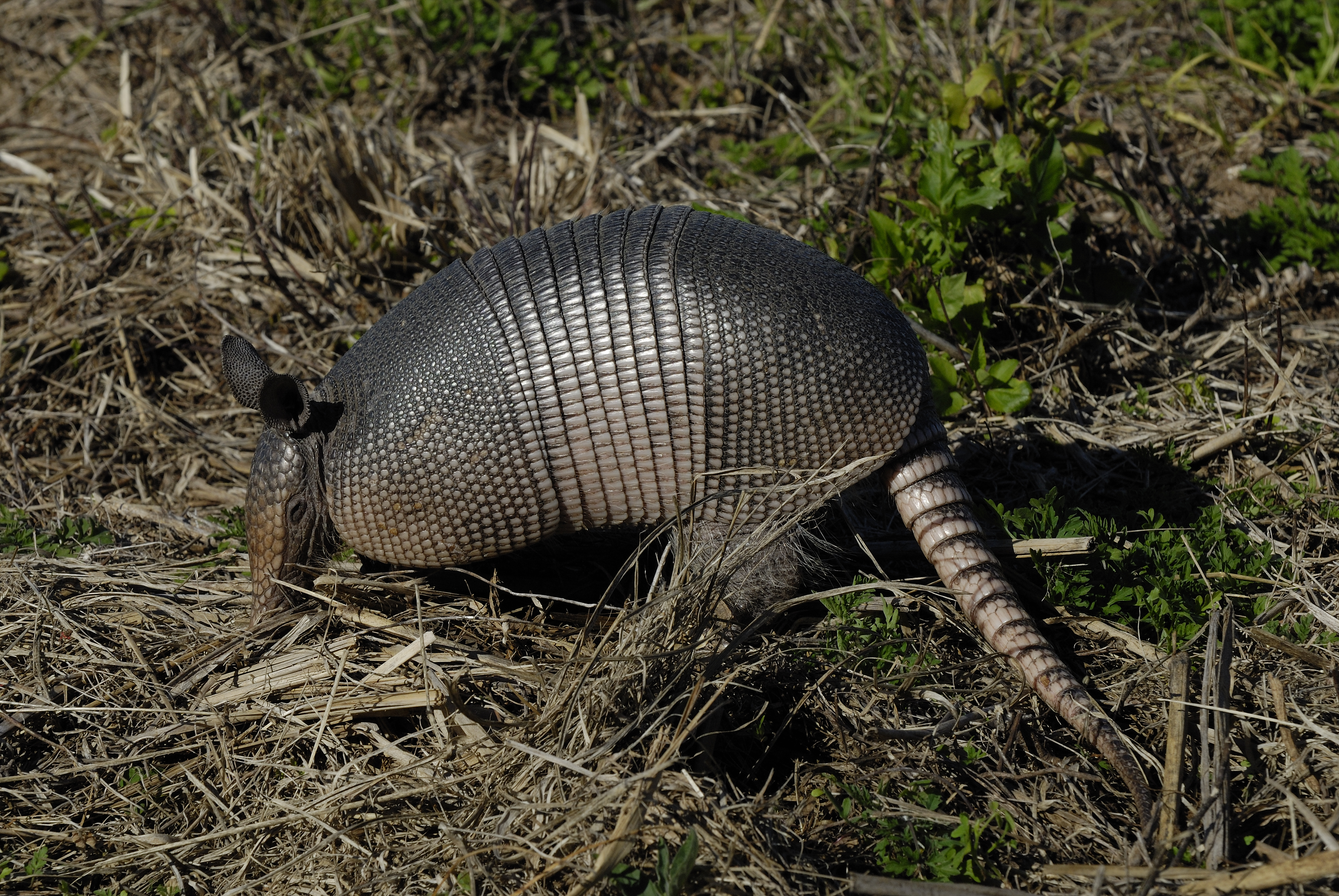 The armadillos are small mammals with a bony armored shell. They are native to the Americas. There are around 20 extant species. Only the nine-banded armadillo is found in the United States.
*Family:
The armadillos are small mammals with a bony armored shell. They are native to the Americas. There are around 20 extant species. Only the nine-banded armadillo is found in the United States.
*Family:



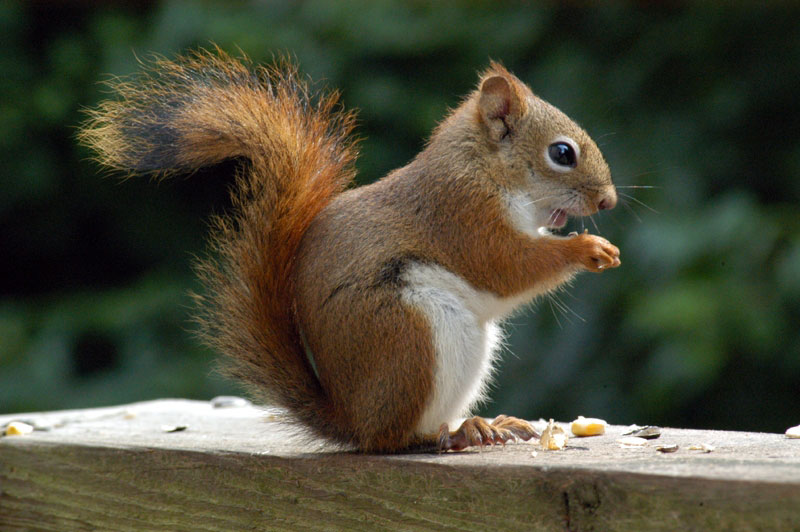
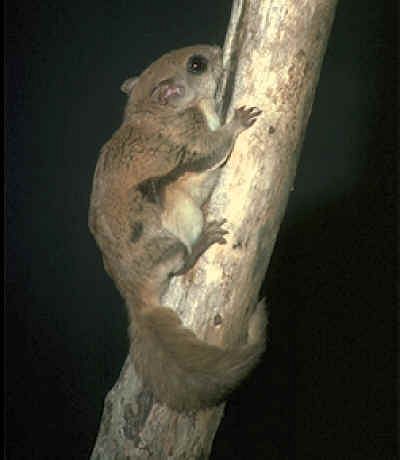
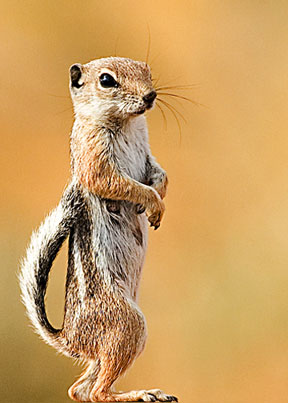



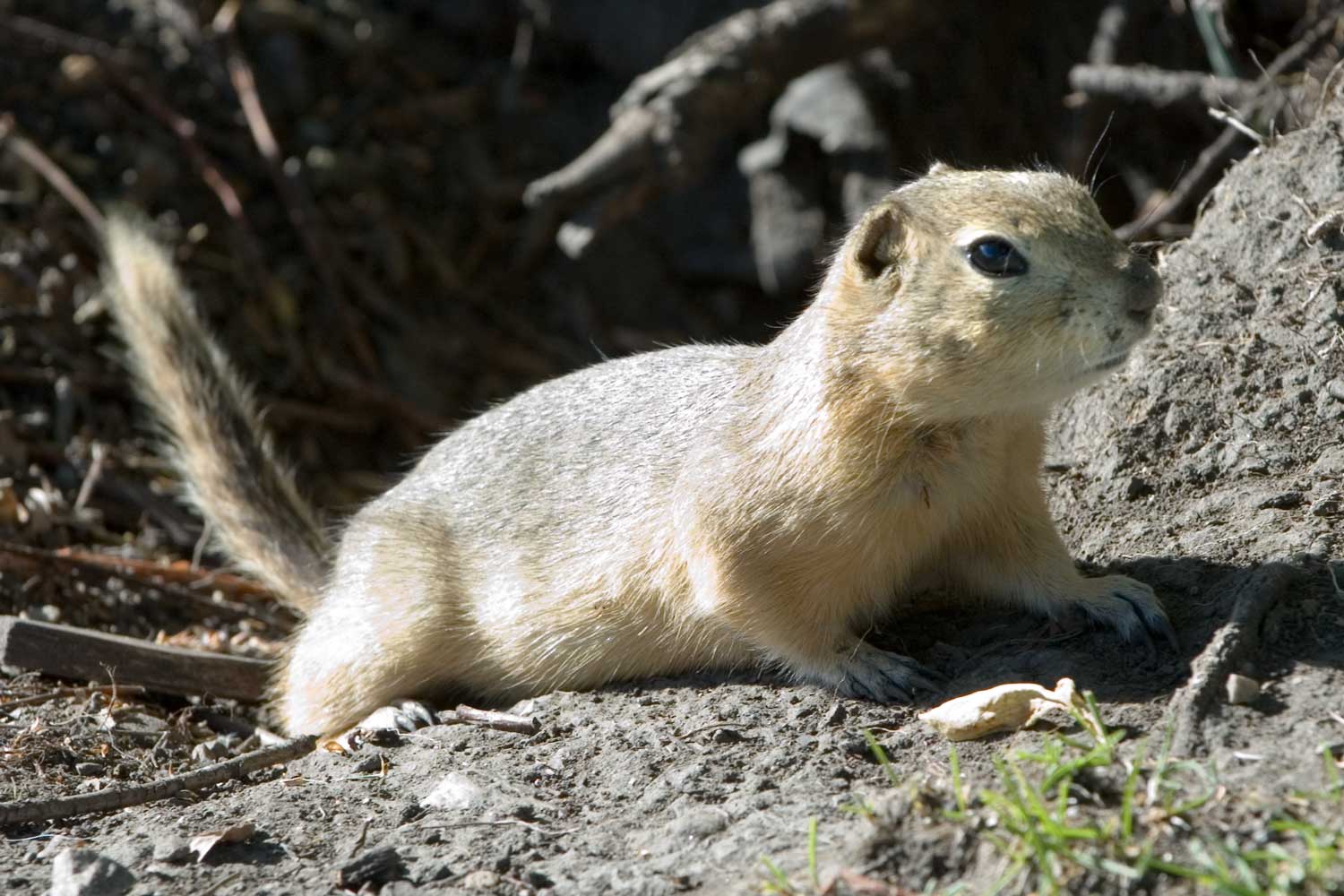
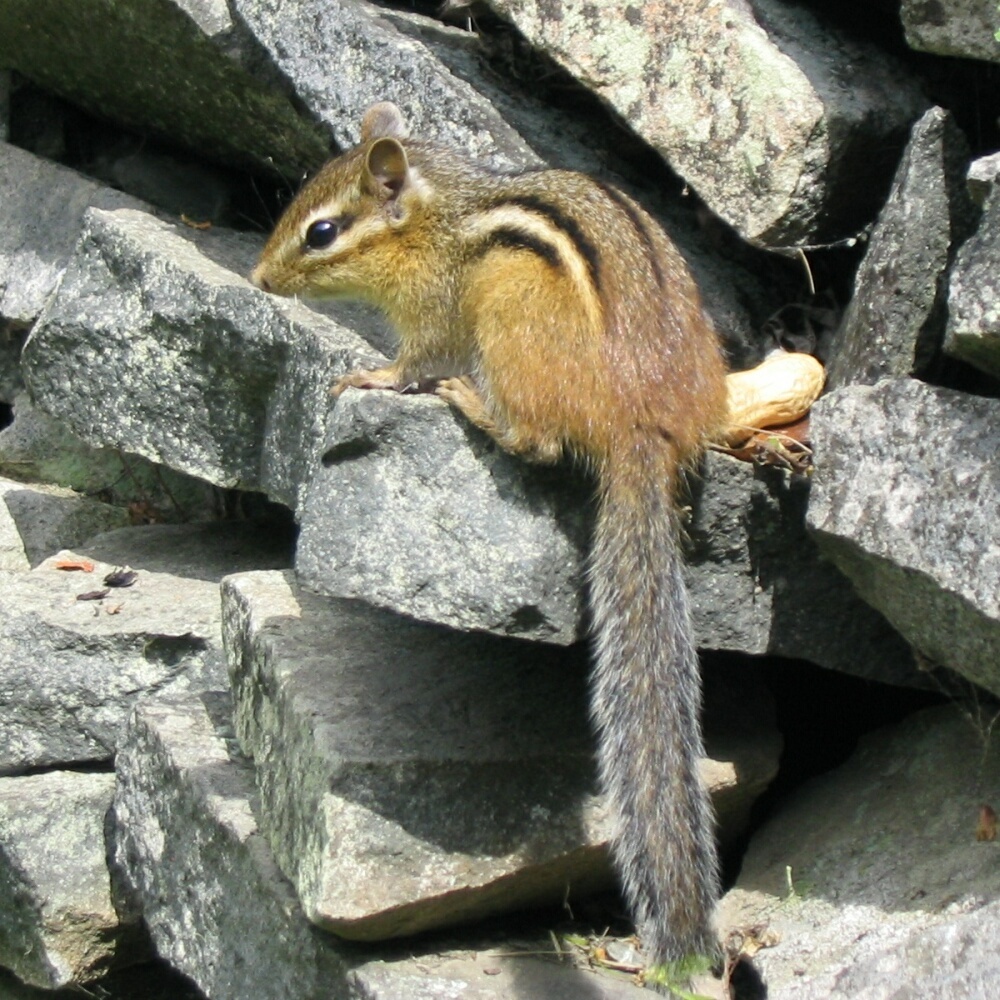

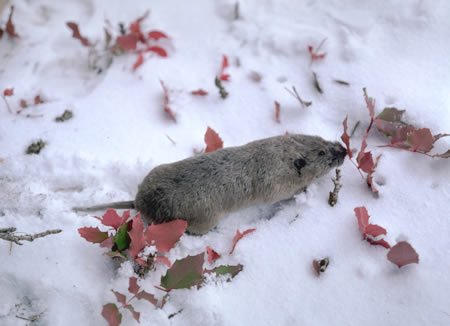
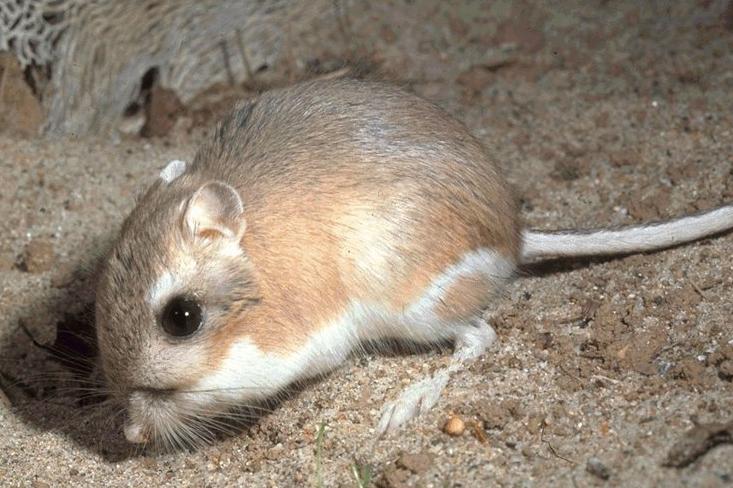

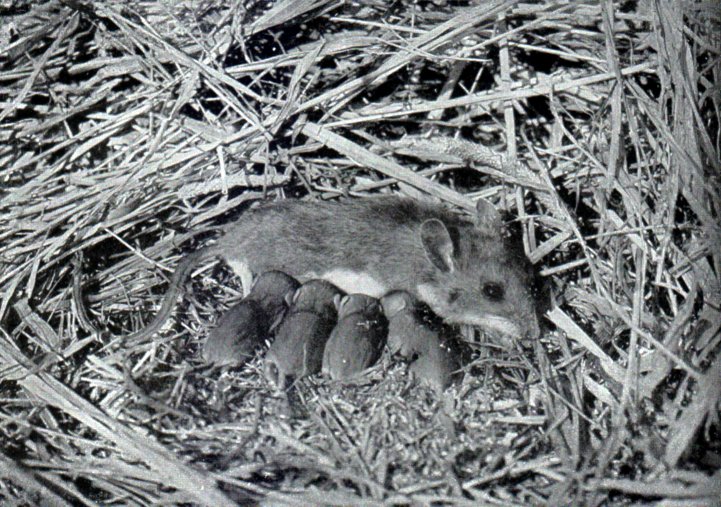
 Rodents make up the largest order of mammals, with over 40% of mammalian species. They have two
Rodents make up the largest order of mammals, with over 40% of mammalian species. They have two
(Carolina northern flying squirrel ''G. s. coloratus'', Virginia northern flying squirrel ''G. s. fuscus'': ) ***** Humboldt's flying squirrel, ''G. oregonensis'' *****
( Delmarva fox squirrel, ''S. n. cinereus'': ) *****
(
(
('' D. venustus'': ) ****
(
( Preble's meadow jumping mouse, ''Z. h. preblei'': ) ****
(including ''M. mogollonensis'': , ssp. ''hualpaiensis'': )) and: *****
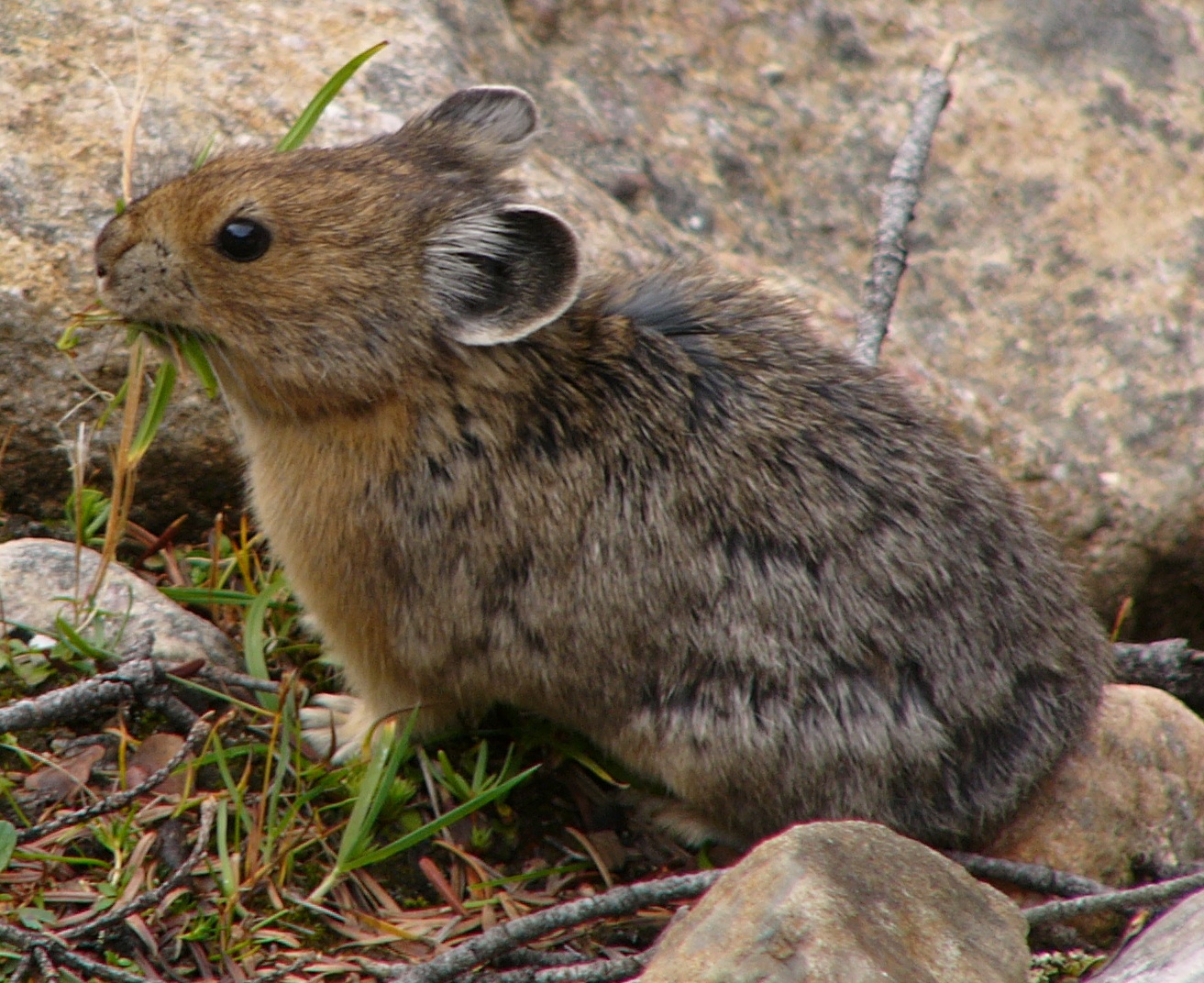

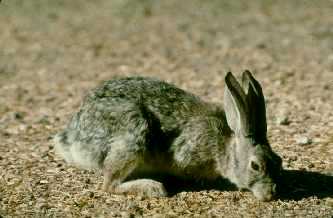
 The lagomorphs comprise two families,
The lagomorphs comprise two families,

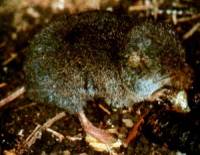




 The bats' most distinguishing feature is that their forelimbs are developed as wings, making them the only mammals capable of flight. Bat species account for about 20% of all mammals.
*Family: Vespertilionidae
**Subfamily: Myotinae
*** Silver-haired bat, ''L. noctivagans''
*** Southwestern myotis, ''M. auriculus''
*** Southeastern myotis, ''M. austroriparius''
*** California myotis, ''M. californicus''
*** Western small-footed myotis, ''M. ciliolabrum''
*** Long-eared myotis, ''M. evotis''
*** Gray bat, ''M. grisescens''
*** Keen's myotis, ''M. keenii''
*** Eastern small-footed myotis, ''M. leibii''
*** Little brown bat, ''M. lucifugus''
*** Dark-nosed small-footed myotis, ''M. melanorhinus''
*** Arizona myotis, ''M. occultus''
*** Northern long-eared myotis, ''M. septentrionalis''
*** Indiana bat, ''M. sodalis''
*** Fringed myotis, ''M. thysanodes''
*** Cave myotis, ''M. velifer''
*** Long-legged myotis, ''M. volans''
*** Yuma myotis, ''M. yumanensis''
**Subfamily: Vespertilioninae
*** Pallid bat, ''A. pallidus''
*** Big brown bat, ''E. fuscus''
*** Spotted bat, ''E. maculatum''
*** Allen's big-eared bat, ''I. phyllotis''
*** Eastern red bat, ''L. borealis''
*** Hoary bat, ''L. cinereus'' (Hawaiian hoary bat, ''L. c. semotus'': )
*** Southern yellow bat, ''L. ega''
*** Desert red bat, ''L. frantzii'' - split from Desert red bat, southern red bat, ''Lasiurus blossevillii''
*** Northern yellow bat, ''L. intermedius''
*** Seminole bat, ''L. seminolus''
*** Western yellow bat, ''L. xanthinus''
*** Evening bat, ''N. humeralis''
*** Western pipistrelle, ''P. hesperus''
*** Eastern pipistrelle, ''P. subflavus''
*** Rafinesque's big-eared bat, ''P. rafinesquii''
*** Townsend's big-eared bat, ''P. townsendii''
The bats' most distinguishing feature is that their forelimbs are developed as wings, making them the only mammals capable of flight. Bat species account for about 20% of all mammals.
*Family: Vespertilionidae
**Subfamily: Myotinae
*** Silver-haired bat, ''L. noctivagans''
*** Southwestern myotis, ''M. auriculus''
*** Southeastern myotis, ''M. austroriparius''
*** California myotis, ''M. californicus''
*** Western small-footed myotis, ''M. ciliolabrum''
*** Long-eared myotis, ''M. evotis''
*** Gray bat, ''M. grisescens''
*** Keen's myotis, ''M. keenii''
*** Eastern small-footed myotis, ''M. leibii''
*** Little brown bat, ''M. lucifugus''
*** Dark-nosed small-footed myotis, ''M. melanorhinus''
*** Arizona myotis, ''M. occultus''
*** Northern long-eared myotis, ''M. septentrionalis''
*** Indiana bat, ''M. sodalis''
*** Fringed myotis, ''M. thysanodes''
*** Cave myotis, ''M. velifer''
*** Long-legged myotis, ''M. volans''
*** Yuma myotis, ''M. yumanensis''
**Subfamily: Vespertilioninae
*** Pallid bat, ''A. pallidus''
*** Big brown bat, ''E. fuscus''
*** Spotted bat, ''E. maculatum''
*** Allen's big-eared bat, ''I. phyllotis''
*** Eastern red bat, ''L. borealis''
*** Hoary bat, ''L. cinereus'' (Hawaiian hoary bat, ''L. c. semotus'': )
*** Southern yellow bat, ''L. ega''
*** Desert red bat, ''L. frantzii'' - split from Desert red bat, southern red bat, ''Lasiurus blossevillii''
*** Northern yellow bat, ''L. intermedius''
*** Seminole bat, ''L. seminolus''
*** Western yellow bat, ''L. xanthinus''
*** Evening bat, ''N. humeralis''
*** Western pipistrelle, ''P. hesperus''
*** Eastern pipistrelle, ''P. subflavus''
*** Rafinesque's big-eared bat, ''P. rafinesquii''
*** Townsend's big-eared bat, ''P. townsendii''
(ssp. ''virginianus'' and ''ingens'': ) *Family: Molossidae ** Wagner's bonneted bat, ''E. glaucinus'' ** Eumops floridanus, Florida bonneted bat, ''E. floridanus'' ** Western mastiff bat, ''E. perotis'' ** Underwood's bonneted bat, ''E. underwoodi'' ** Velvety free-tailed bat, ''M. molossus'' ** Pocketed free-tailed bat, ''N. femorosaccus'' ** Big free-tailed bat, ''N. macrotis'' ** Mexican free-tailed bat, ''T. brasiliensis'' *Family: Mormoopidae ** Ghost-faced bat, ''M. megalophylla'' *Family: Phyllostomidae **Subfamily: Phyllostominae *** California leaf-nosed bat, ''M. californicus'' **Subfamily: Glossophaginae *** Mexican long-tongued bat, ''C. mexicana'' *** Lesser long-nosed bat, ''L. yerbabuenae'' (''Southern long-nosed bat, Leptonycteris curasoae yerbabuenae'': ) *** Greater long-nosed bat, ''L. nivalis'' **Subfamily: Stenodermatinae *** Velvety fruit-eating bat, ''E. hartii'' **Subfamily: Desmodontinae *** Hairy-legged vampire bat, ''D. ecaudata''




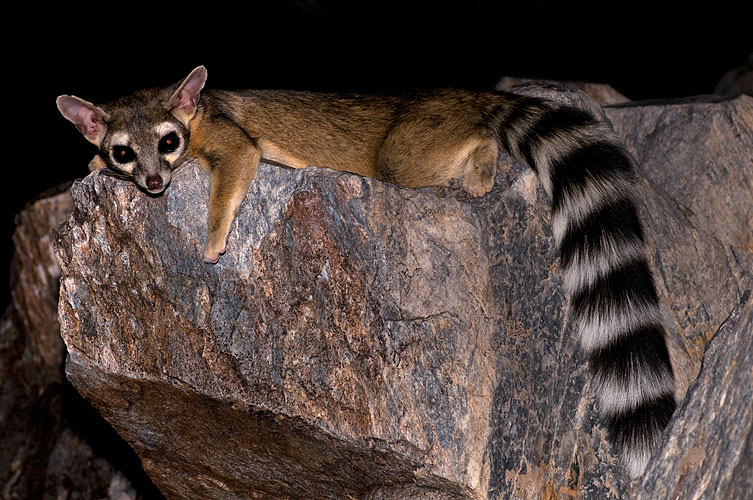

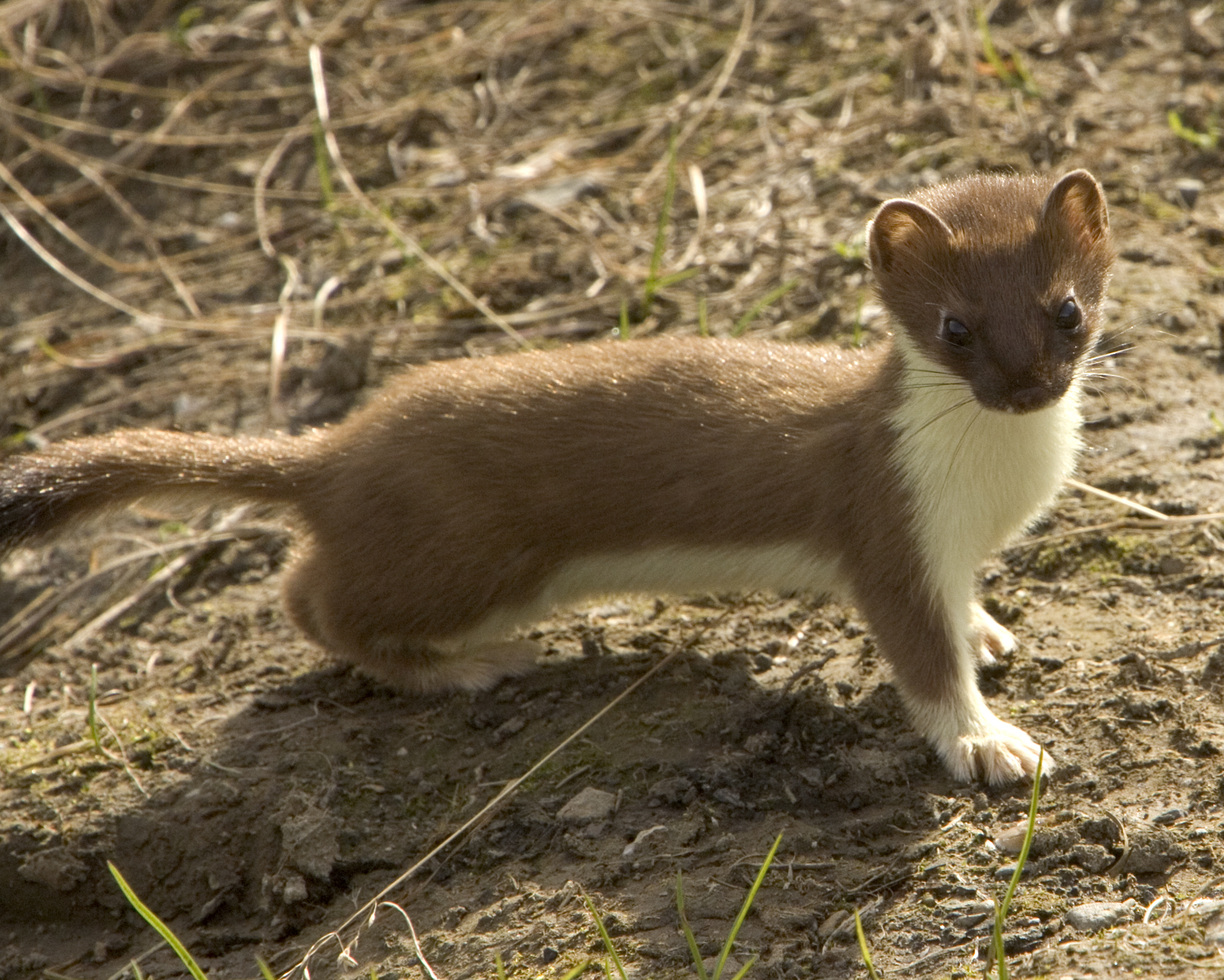


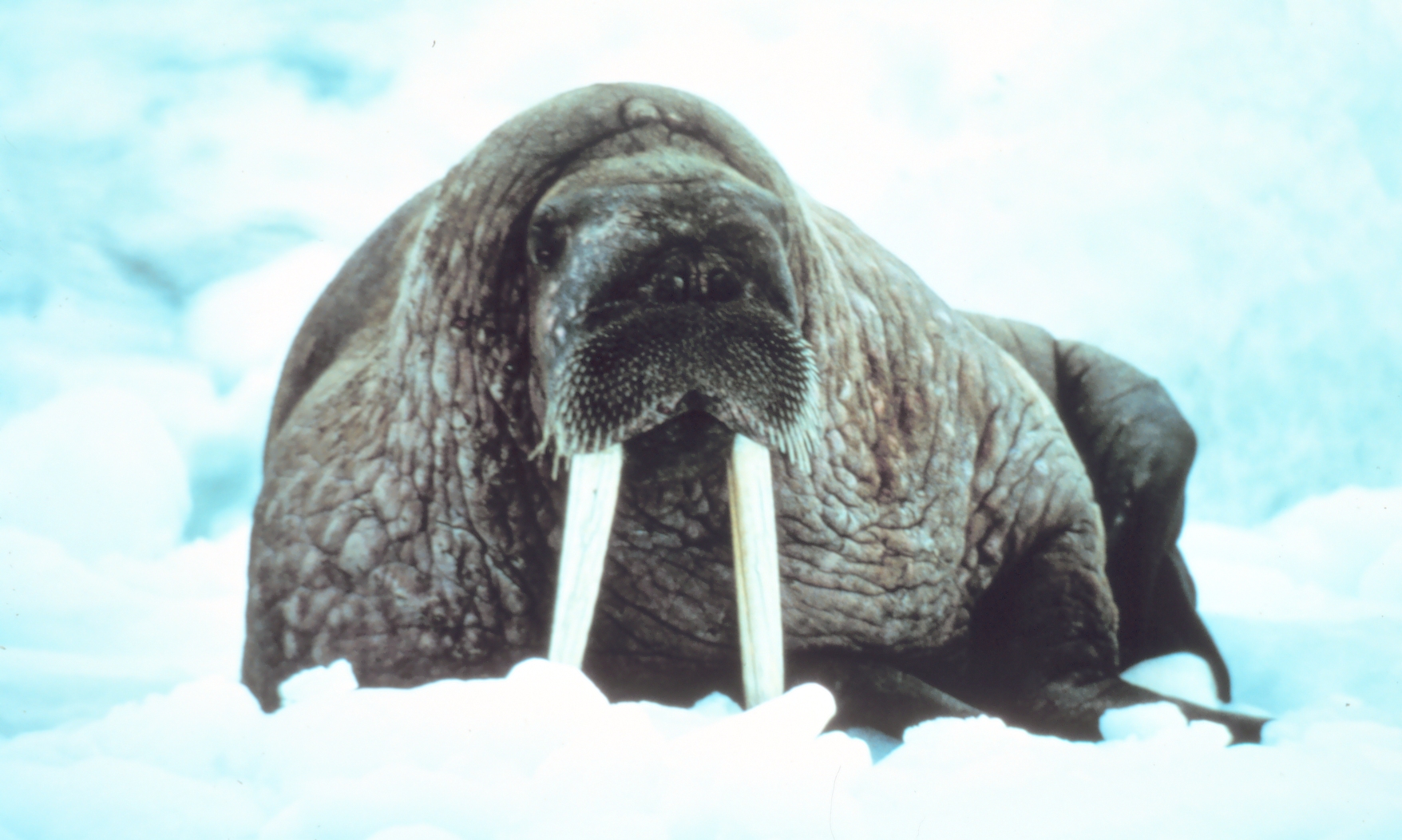

 There are over 260 species of carnivorans, the majority of which feed primarily on meat. They have a characteristic skull shape and dentition.
*Suborder: Feliformia
**Family: Felidae (cats)
*** Jaguarundi, ''H. yagouaroundi'' (Ex?)
*** Ocelot, ''L. pardalis''
*** Margay, ''L. wiedii'' (Ex?)
*** Canada lynx, ''L. canadensis''
*** Bobcat, ''L. rufus''
*** North American cougar, Cougar, ''P. concolor''
*** Jaguar, ''P. onca''
*Suborder: Caniformia
**Family: Canidae (dogs)
*** Coyote, ''C. latrans''
*** Gray wolf, ''C. lupus'' (and )
**** Arctic wolf, ''C. l. arctos'' (Alaska only) (and )
*** Eastern wolf, ''C. l. lycaon''
*** Red wolf, ''C. rufus'' (and )
*** Gray fox, ''U. cinereoargenteus''
*** Island fox, ''U. littoralis''
There are over 260 species of carnivorans, the majority of which feed primarily on meat. They have a characteristic skull shape and dentition.
*Suborder: Feliformia
**Family: Felidae (cats)
*** Jaguarundi, ''H. yagouaroundi'' (Ex?)
*** Ocelot, ''L. pardalis''
*** Margay, ''L. wiedii'' (Ex?)
*** Canada lynx, ''L. canadensis''
*** Bobcat, ''L. rufus''
*** North American cougar, Cougar, ''P. concolor''
*** Jaguar, ''P. onca''
*Suborder: Caniformia
**Family: Canidae (dogs)
*** Coyote, ''C. latrans''
*** Gray wolf, ''C. lupus'' (and )
**** Arctic wolf, ''C. l. arctos'' (Alaska only) (and )
*** Eastern wolf, ''C. l. lycaon''
*** Red wolf, ''C. rufus'' (and )
*** Gray fox, ''U. cinereoargenteus''
*** Island fox, ''U. littoralis''
(ssp. ''littoralis'', ''catalinae'', ''santarosae'' and ''santacruzae'': ) *** Arctic fox, ''V. lagopus'' (
(Louisiana black bear ''U. a. luteolus'': ) *** Brown bear, ''U. arctos''
(includes grizzly bear, ''Ursus arctos horribilis'': , ,
Alaskan brown bear ''Ursus arctos middendorffi'', also known as the Kodiak bear,
and ''Ursus arctos californicus''†, the California grizzly bear ) *** Polar bear, ''U. maritimus'' (
(except west of 144° W, where ) (ssp. ''monteriensis'': ) *** California sea lion, ''Z. californianus'' **Family: Mephitidae *** American hog-nosed skunk, ''C. leuconotus'' *** Hooded skunk, ''M. macroura'' *** Striped skunk, ''M. mephitis'' *** Western spotted skunk, ''S. gracilis'' *** Eastern spotted skunk, ''S. putorius'' **Family: Odobenidae *** Walrus, ''O. rosmarus'' (




 The even-toed ungulates are ungulates whose weight is borne about equally by the third and fourth toes, rather than mostly or entirely by the third as in perissodactyls. There are about 220 artiodactyl species, including many that are of great economic importance to humans.
*Family: Tayassuidae (peccaries)
** Collared peccary, ''D. tajacu''
*Family: Cervidae (deer)
**Subfamily: Cervinae
*** Elk, ''C. canadensis''
**Subfamily: Capreolinae
*** Moose, ''A. alces''
*** Mule deer, ''O. hemionus''
*** White-tailed deer, ''O. virginianus'' (Odocoileus virginianus leucurus, Columbian white-tailed deer, ''O. v. leucurus'', and Odocoileus virginianus clavium, key deer, ''O. v. clavium'': )
*** Caribou, ''R. tarandus'' (
The even-toed ungulates are ungulates whose weight is borne about equally by the third and fourth toes, rather than mostly or entirely by the third as in perissodactyls. There are about 220 artiodactyl species, including many that are of great economic importance to humans.
*Family: Tayassuidae (peccaries)
** Collared peccary, ''D. tajacu''
*Family: Cervidae (deer)
**Subfamily: Cervinae
*** Elk, ''C. canadensis''
**Subfamily: Capreolinae
*** Moose, ''A. alces''
*** Mule deer, ''O. hemionus''
*** White-tailed deer, ''O. virginianus'' (Odocoileus virginianus leucurus, Columbian white-tailed deer, ''O. v. leucurus'', and Odocoileus virginianus clavium, key deer, ''O. v. clavium'': )
*** Caribou, ''R. tarandus'' (
(includes Rangifer tarandus caribou, migratory woodland caribou, ''R. t. caribou'': ,
see also: barren-ground caribou, ''R. t. groenlandicus'') *Family: Antilocapridae (pronghorn) ** Pronghorn, ''A. americana'' (Antilocapra americana sonoriensis, Sonoran pronghorn, ''A. a. sonoriensis'': ) *Family: Bovidae (cattle, antelope, sheep, goats) **Subfamily: Bovinae *** American bison, ''B. bison'' (Bison bison athabascae, wood bison, ''B. b. athabascae'': ) **Subfamily: Caprinae *** Mountain goat, ''O. americanus'' *** Muskox, ''O. moschatus'' (
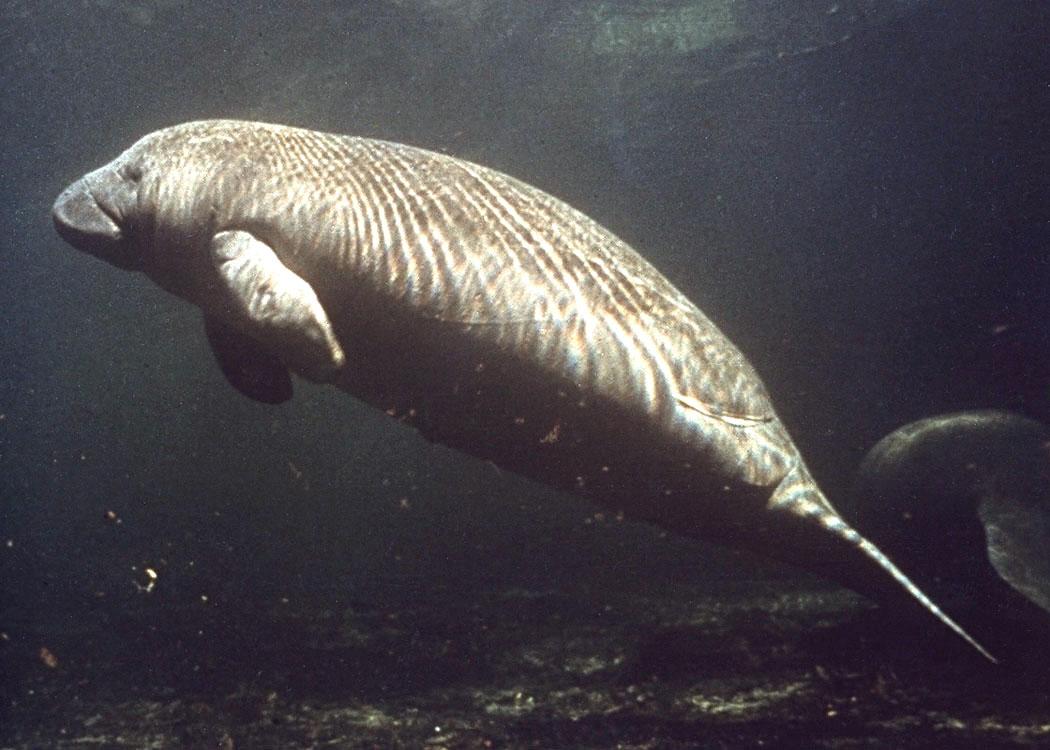 Sirenia is an order of fully aquatic, herbivorous mammals that inhabit rivers, estuaries, coastal marine waters, swamps, and marine wetlands.
*Family: Dugongidae
** Steller's sea cow, †''H. gigas'' (
Sirenia is an order of fully aquatic, herbivorous mammals that inhabit rivers, estuaries, coastal marine waters, swamps, and marine wetlands.
*Family: Dugongidae
** Steller's sea cow, †''H. gigas'' (
(Antillean or Caribbean manatee: , ssp. ''latirostris'' - Florida manatee: )
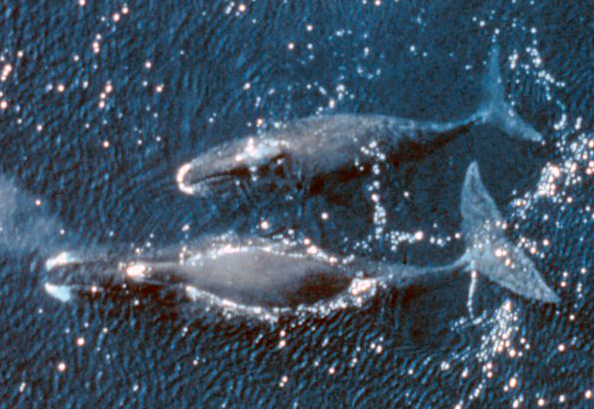
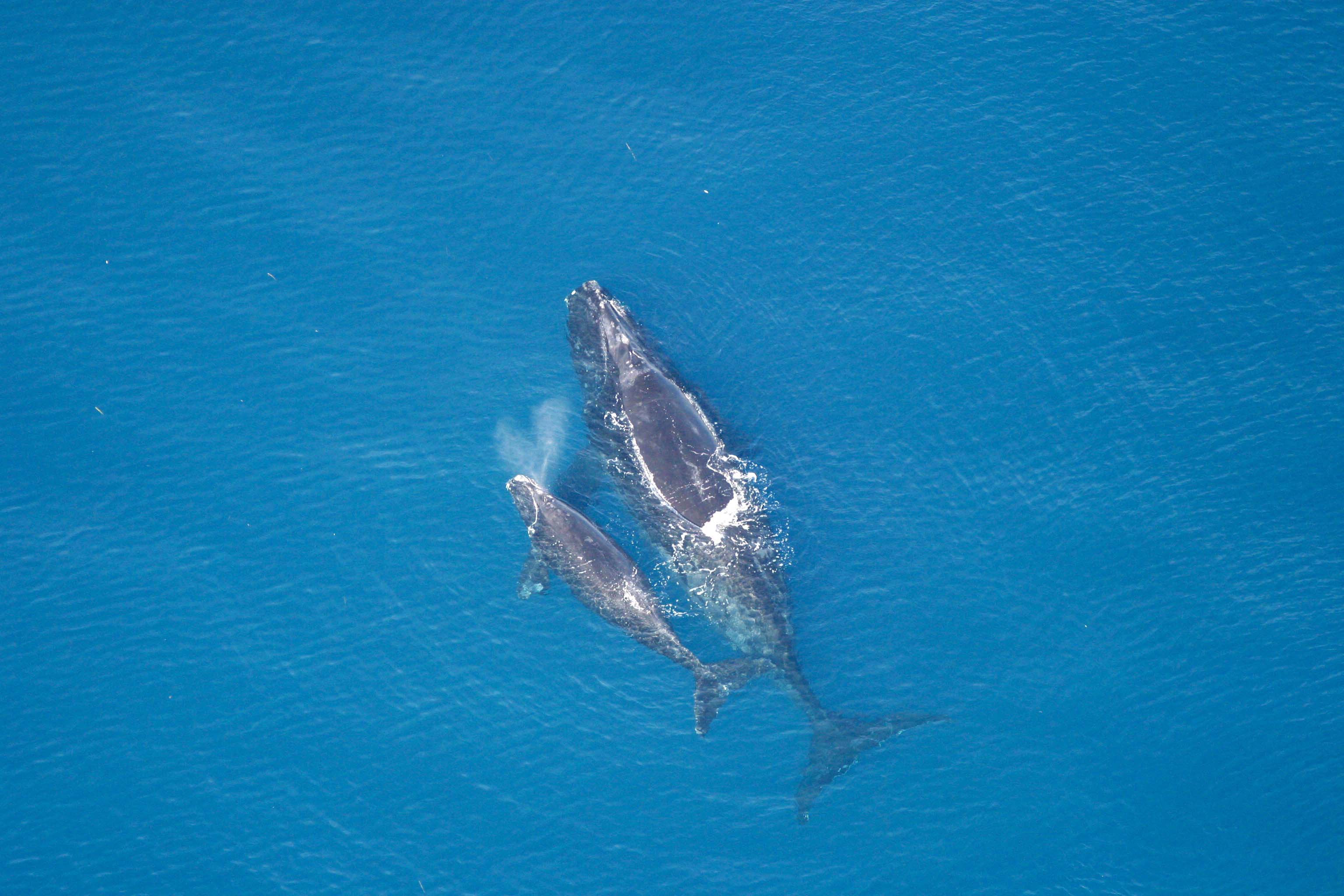


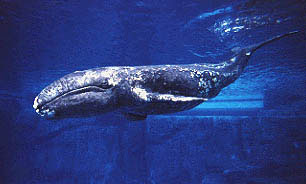

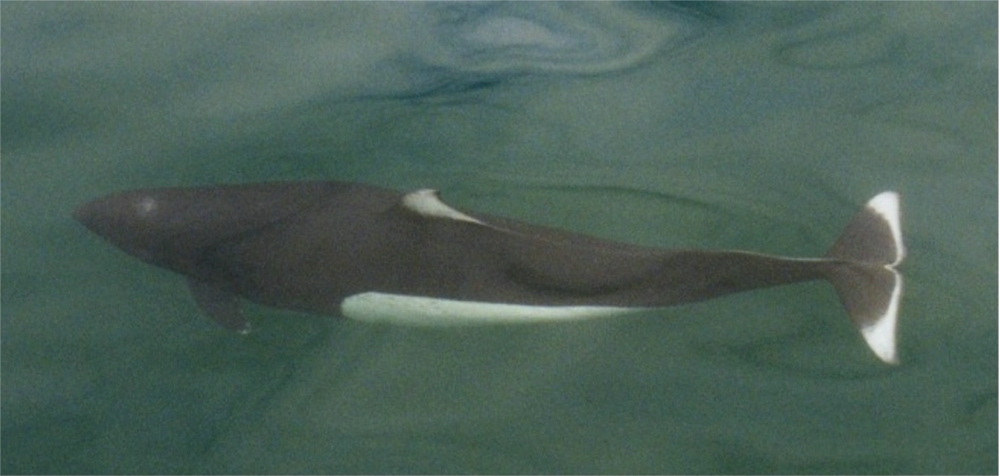


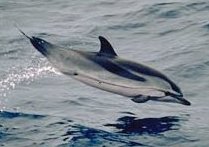

 The order Cetacea includes whales, dolphins and porpoises. They are the mammals most fully aquatic adaptation, adapted to aquatic life with a spindle-shaped nearly hairless body, protected by a thick layer of blubber, and forelimbs and tail modified to provide propulsion underwater.
*Suborder: Mysticeti
**Family: Balaenidae
*** Bowhead whale, ''B. mysticetus'' (
The order Cetacea includes whales, dolphins and porpoises. They are the mammals most fully aquatic adaptation, adapted to aquatic life with a spindle-shaped nearly hairless body, protected by a thick layer of blubber, and forelimbs and tail modified to provide propulsion underwater.
*Suborder: Mysticeti
**Family: Balaenidae
*** Bowhead whale, ''B. mysticetus'' (
(Northeast Pacific subpopulation: ) **Family: Balaenopteridae ***Subfamily: Balaenopterinae **** Common minke whale, ''B. acutorostrata'' **** Sei whale, ''B. borealis'' ****Species split from the Bryde's whale (''B. edeni'') (A) : ***** Bryde's whale, ''B. brydei'' ***** Rice's whale, ''B. ricei'' **** Blue whale, ''B. musculus'' (ssp. ''brevicauda'' - pygmy blue whale: , ssp. ''musculus'' North Pacific stock: ) **** Fin whale, ''B. physalus'' ***Subfamily: Megapterinae **** Humpback whale, ''M. novaeangliae'' **Family: Eschrichtiidae *** Gray whale, ''E. robustus'' *Suborder: Odontoceti **Superfamily: Platanistoidea ***Family: Monodontidae **** Beluga whale, Beluga, ''D. leucas'' (Cook Inlet subpopulation: ) **** Narwhal, ''M. monoceros'' (
American Society of Mammalogists
- i.e. printable Field Guide to mammals of North America
Search the Division of Mammals Collections
- National Museum of Natural History, Smithsonian Institution
Mammal Species of the World, 3rd edition (MSW3)
- database of mammalian taxonomy
IUCN Red List of Threatened SpeciesSearch results
mammalia, USA, 2014-03-29)
Endangered Species Program - US Fish & Wildlife ServiceSpecies Search - US Fish & Wildlife ServiceEndangered Species Act - National Marine Fisheries Service - NOAA
List of Endangered and threatened wildlife
- US Government Printing Office {{DEFAULTSORT:List Of Mammals Of The United States Lists of mammals of the United States,
mammals
Mammals () are a group of vertebrate animals constituting the class Mammalia (), characterized by the presence of mammary glands which in females produce milk for feeding (nursing) their young, a neocortex (a region of the brain), fur o ...
are recorded in the United States. Unincorporated territories
Territories of the United States are sub-national administrative divisions overseen by the federal government of the United States. The various American territories differ from the U.S. states and tribal reservations as they are not sover ...
like for example Puerto Rico
Puerto Rico (; abbreviated PR; tnq, Boriken, ''Borinquen''), officially the Commonwealth of Puerto Rico ( es, link=yes, Estado Libre Asociado de Puerto Rico, lit=Free Associated State of Puerto Rico), is a Caribbean island and unincorporated ...
, Guam
Guam (; ch, Guåhan ) is an organized, unincorporated territory of the United States in the Micronesia subregion of the western Pacific Ocean. It is the westernmost point and territory of the United States (reckoned from the geographic cent ...
or Northern Mariana Islands
The Northern Mariana Islands, officially the Commonwealth of the Northern Mariana Islands (CNMI; ch, Sankattan Siha Na Islas Mariånas; cal, Commonwealth Téél Falúw kka Efáng llól Marianas), is an unincorporated territory and commonw ...
are not covered. Mammals introduced and extinct in the Holocene except Pleistocene
The Pleistocene ( , often referred to as the ''Ice age'') is the geological epoch that lasted from about 2,580,000 to 11,700 years ago, spanning the Earth's most recent period of repeated glaciations. Before a change was finally confirmed in ...
/Holocene
The Holocene ( ) is the current geological epoch. It began approximately 11,650 cal years Before Present (), after the Last Glacial Period, which concluded with the Holocene glacial retreat. The Holocene and the preceding Pleistocene togeth ...
boundary are included.
According to the IUCN Red List
The International Union for Conservation of Nature (IUCN) Red List of Threatened Species, also known as the IUCN Red List or Red Data Book, founded in 1964, is the world's most comprehensive inventory of the global conservation status of biol ...
3 of these species are critically endangered, 20 endangered
An endangered species is a species that is very likely to become extinct in the near future, either worldwide or in a particular political jurisdiction. Endangered species may be at risk due to factors such as habitat loss, poaching and in ...
, 15 vulnerable, 20 near threatened
A near-threatened species is a species which has been categorized as "Near Threatened" (NT) by the International Union for Conservation of Nature as that may be vulnerable to endangerment in the near future, but it does not currently qualify f ...
and 4 extinct.
Some species are identified as indicated below:
*(A) - Accidental
*(E) - Extinct
*(Ex) - Extirpated (extinct in the US, but exists elsewhere in the world)
*(I) - Introduced
The following tags are used to highlight each species' conservation status as assessed by the International Union for Conservation of Nature
The International Union for Conservation of Nature (IUCN; officially International Union for Conservation of Nature and Natural Resources) is an international organization working in the field of nature conservation and sustainable use of nat ...
:
(v. 2013.2, the data are current as of March 5, 2014)
and the Endangered Species Act:
(the data are current as of March 28, 2014)
Subclass: Theria
Infraclass: Metatheria
Order: Didelphimorphia (common opossums)
---- Didelphimorphia is the order of common opossums of the
Didelphimorphia is the order of common opossums of the Western Hemisphere
The Western Hemisphere is the half of the planet Earth that lies west of the prime meridian (which crosses Greenwich, London, United Kingdom) and east of the antimeridian. The other half is called the Eastern Hemisphere. Politically, the te ...
. Opossums probably diverged from the basic South America
South America is a continent entirely in the Western Hemisphere and mostly in the Southern Hemisphere, with a relatively small portion in the Northern Hemisphere at the northern tip of the continent. It can also be described as the sout ...
n marsupial
Marsupials are any members of the mammalian infraclass Marsupialia. All extant marsupials are endemic to Australasia, Wallacea and the Americas. A distinctive characteristic common to most of these species is that the young are carried in a ...
s in the late Cretaceous
The Cretaceous ( ) is a geological period that lasted from about 145 to 66 million years ago (Mya). It is the third and final period of the Mesozoic Era, as well as the longest. At around 79 million years, it is the longest geological period of ...
or early Paleocene
The Paleocene, ( ) or Palaeocene, is a geological epoch that lasted from about 66 to 56 million years ago (mya). It is the first epoch of the Paleogene Period in the modern Cenozoic Era. The name is a combination of the Ancient Greek ''pal ...
. They are small to medium-sized marsupials, about the size of a large house cat
The cat (''Felis catus'') is a domestic species of small carnivorous mammal. It is the only domesticated species in the family Felidae and is commonly referred to as the domestic cat or house cat to distinguish it from the wild members of ...
, with a long snout and prehensile
Prehensility is the quality of an appendage or organ that has adapted for grasping or holding. The word is derived from the Latin term ''prehendere'', meaning "to grasp". The ability to grasp is likely derived from a number of different orig ...
tail.
*Family: Didelphidae (American opossums)
**Subfamily: Didelphinae
The Didelphinae are a subfamily of opossums consisting of 15 genera and 123 species. Specimens have been collected throughout the Americas, but are predominant in South and Central America.
Some sources call this subfamily the "American opossu ...
*** Virginia opossum
The Virginia opossum (''Didelphis virginiana''), also known as the North American opossum, is the only opossum living north of Mexico, its range extending south into Central America. It is the northernmost marsupial in the world. In the United S ...
, ''D. virginiana''
Infraclass: Eutheria
Order: Cingulata (armadillos)
---- The armadillos are small mammals with a bony armored shell. They are native to the Americas. There are around 20 extant species. Only the nine-banded armadillo is found in the United States.
*Family:
The armadillos are small mammals with a bony armored shell. They are native to the Americas. There are around 20 extant species. Only the nine-banded armadillo is found in the United States.
*Family: Dasypodidae
Dasypodidae is a family of mostly extinct genera of armadillos. One genus, ''Dasypus'', is extant, with at least seven living species.
__TOC__
Classification
Below is a taxonomy of armadillos in this family.
Family Dasypodidae
*† Genus ...
(armadillos)
**Subfamily: Dasypodinae
*** Nine-banded armadillo
The nine-banded armadillo (''Dasypus novemcinctus''), also known as the nine-banded long-nosed armadillo or common long-nosed armadillo, is a mammal found in North, Central, and South America, making it the most widespread of the armadillos. ...
, ''D. novemcinctus''
Order: Rodentia (rodents)
----















 Rodents make up the largest order of mammals, with over 40% of mammalian species. They have two
Rodents make up the largest order of mammals, with over 40% of mammalian species. They have two incisor
Incisors (from Latin ''incidere'', "to cut") are the front teeth present in most mammals. They are located in the premaxilla above and on the mandible below. Humans have a total of eight (two on each side, top and bottom). Opossums have 18, wher ...
s in the upper and lower jaw which grow continually and must be kept short by gnawing. Most rodents are small though the capybara can weigh up to .
*Suborder: Hystricognathi
The Hystricognathi are an infraorder of rodents, distinguished from other rodents by the bone structure of their skull
The skull is a bone protective cavity for the brain. The skull is composed of four types of bone i.e., cranial bones, fa ...
**Family: Erethizontidae (New World porcupines)
***Subfamily: Erethizontinae
**** North American porcupine
The North American porcupine (''Erethizon dorsatum''), also known as the Canadian porcupine, is a large quill-covered rodent in the New World porcupine family. It is the second largest rodent in North America, after the North American beaver ('' ...
, ''E. dorsatum''
*Suborder: Sciurognathi
Sciurognathi is a suborder of rodents that includes squirrels, chipmunks, beavers, and many types of mice. The group is characterized by a specific shape to the lower jaw. In sciurognaths, the angular process of the jaw is in the same plane as ...
**Family: Aplodontiidae
The family Aplodontiidae also known as Aplodontidae, Haplodontiidae or Haploodontini is traditionally classified as the sole extant family of the suborder Protrogomorpha. It may be the sister family of the Sciuridae.
There are fossils from the ...
(mountain beaver)
*** Mountain beaver
The mountain beaver (''Aplodontia rufa'')Other names include mountain boomer, ground bear, giant mole, gehalis, lesser sasquatch, sewellel, suwellel, showhurll, showtl, and showte, as well as a number of Chinookan and other Native American terms ...
, ''A. rufa'' (ssp. ''nigra'': )
**Family: Castoridae
The family Castoridae contains the two living species of beavers and their fossil relatives. A highly diverse group of rodents within this family once roamed the earth, but only a single genus is extant today, '' Castor''.
Characteristics
Ca ...
(beavers)
*** American beaver
The North American beaver (''Castor canadensis'') is one of two extant beaver species, along with the Eurasian beaver (''Castor fiber''). It is native to North America and introduced in South America (Patagonia) and Europe (primarily Finland ...
, ''C. canadensis''
**Family: Sciuridae
Squirrels are members of the family Sciuridae, a family that includes small or medium-size rodents. The squirrel family includes tree squirrels, ground squirrels (including chipmunks and prairie dogs, among others), and flying squirrels. Squ ...
(squirrels)
***Subfamily: Sciurinae
Sciurinae is a subfamily of squirrels (in the family Sciuridae), uniting the flying squirrels with certain related tree squirrels. Older sources place the flying squirrels in a separate subfamily (Pteromyinae) and unite all remaining sciurids i ...
****Tribe: Pteromyini
***** Northern flying squirrel
The northern flying squirrel (''Glaucomys sabrinus'') is one of three species of the genus '' Glaucomys'', the only flying squirrels found in North America.Walker EP, Paradiso JL. 1975. ''Mammals of the World''. Baltimore: Johns Hopkins Universit ...
, ''G. sabrinus'' (Carolina northern flying squirrel ''G. s. coloratus'', Virginia northern flying squirrel ''G. s. fuscus'': ) ***** Humboldt's flying squirrel, ''G. oregonensis'' *****
Southern flying squirrel
The southern flying squirrel or the assapan (''Glaucomys volans'') is one of three species of the genus '' Glaucomys'' and one of three flying squirrel species found in North America. It is found in deciduous and mixed woods in the eastern half o ...
, ''G. volans''
****Tribe: Sciurini
Sciurini is a tribe that includes about forty species of squirrels,Thorington and Hoffmann, 2005, p. 754 mostly from the Americas. It includes five living genera—the American dwarf squirrels, '' Microsciurus''; the Bornean '' Rheithrosciuru ...
***** Abert's squirrel
Abert's squirrel or the tassel-eared squirrel (''Sciurus aberti'') is a tree squirrel in the genus ''Sciurus'' native to the southern Rocky Mountains from the United States to the northern Sierra Madre Occidental of Mexico, with concentrations fo ...
, ''S. aberti''
***** Arizona gray squirrel
The Arizona gray squirrel (''Sciurus arizonensis'') is a tree squirrel, in the genus ''Sciurus'', endemic to the canyons and valleys surrounded by deciduous and mixed forests in eastern Arizona and northern Mexico.
It is threatened by habi ...
, ''S. arizonensis''
***** Eastern gray squirrel
The eastern gray squirrel (''Sciurus carolinensis''), also known, particularly outside of North America, as simply the grey squirrel, is a tree squirrel in the genus ''Sciurus''. It is native to eastern North America, where it is the most prodi ...
, ''S. carolinensis''
***** Western gray squirrel
The western gray squirrel (''Sciurus griseus'') is a tree squirrel found along the western coast of the United States and Mexico. In some places, this species has also been known as the silver-gray squirrel, the California gray squirrel, the Or ...
, ''S. griseus''
***** Mexican fox squirrel
The Mexican fox squirrel (''Sciurus nayaritensis'') is a species of tree squirrel found throughout the Sierra Madre Occidental of Mexico as far south as Jalisco — and northward into the Chiricahua Mountains of southeastern Arizona, U.S.Best, T ...
, ''S. nayaritensis''
***** Fox squirrel
The fox squirrel (''Sciurus niger''), also known as the eastern fox squirrel or Bryant's fox squirrel, is the largest species of tree squirrel native to North America. Despite the differences in size and coloration, it is sometimes mistaken for A ...
, ''S. niger'' ( Delmarva fox squirrel, ''S. n. cinereus'': ) *****
Douglas squirrel
The Douglas squirrel (''Tamiasciurus douglasii'') is a pine squirrel found in the Pacific Northwest of North America, including the northwestern coastal states of the United States as well as the southwestern coast of British Columbia in Canada, ...
, ''T. douglasii''
***** Southwestern red squirrel
The southwestern red squirrel or Fremont's squirrel (''Tamiasciurus fremonti'') is a species of tree squirrel endemic to high-altitude regions of the southwestern United States.
Taxonomy
It was formerly considered conspecific with the Americ ...
, ''T. fremonti'' (
Mount Graham red squirrel
The Mount Graham red squirrel (''Tamiasciurus fremonti grahamensis'') is an endangered subspecies of the southwestern red squirrel (''Tamiasciurus fremonti'') native to the Pinaleño Mountains of Arizona. It is smaller than most other subspecies ...
, ''T. f. grahamensis'': )
***** North American red squirrel, ''T. hudsonicus''
***Subfamily: Xerinae
The Xerinae comprise a subfamily of squirrels, many of which are highly terrestrial. It includes the tribes Marmotini (marmots, chipmunks, prairie dogs, and other Holarctic ground squirrels), Xerini (African and some Eurasian ground squirrels), ...
****Tribe: Marmotini
***** Harris's antelope squirrel
Harris's antelope squirrel (''Ammospermophilus harrisii'') is a species of rodent in the family Sciuridae. It is found in Arizona and New Mexico in the United States, and in Sonora in Mexico. They are adapted to hot weather conditions including ...
, ''A. harrisii''
***** Texas antelope squirrel
The Texas antelope squirrel (''Ammospermophilus interpres'') is a species of rodent in the family Sciuridae.
It is found in Mexico and in both Texas and New Mexico within the United States.
Description
Adults can measure up to long, and weigh . ...
, ''A. interpres''
***** White-tailed antelope squirrel, ''A. leucurus''
***** San Joaquin antelope squirrel, ''A. nelsoni''
***** Gunnison's prairie dog
Gunnison's prairie dog (''Cynomys gunnisoni'') is one of five species of prairie dog. This species belongs to the squirrel family of rodents, and are predominantly related to the North American and Eurasian ground squirrels. Gunnison's prairie do ...
, ''C. gunnisoni''
***** White-tailed prairie dog
The white-tailed prairie dog (''Cynomys leucurus'') is found in western Wyoming and western Colorado with small areas in eastern Utah and southern Montana. The largest populations are in Wyoming where they are known colloquially as "chiselers ...
, ''C. leucurus''
***** Black-tailed prairie dog
The black-tailed prairie dog (''Cynomys ludovicianus'') is a rodent of the family Sciuridae found in the Great Plains of North America from about the United States-Canada border to the United States-Mexico border. Unlike some other prairie dogs, ...
, ''C. ludovicianus''
***** Utah prairie dog
The Utah prairie dog (''Cynomys parvidens'') is the smallest species of prairie dog endemic to the south-central steppes of the American state of Utah.
The species is listed in the IUCN Red List of Threatened Species with a status of Endangered. ...
, ''C. parvidens''
***** Alaska marmot
The Alaska marmot (''Marmota broweri''), also known as the Brooks Range marmot or the Brower's marmot, is a species of rodent in the family Sciuridae. Once considered to be the same species as the hoary marmot, it is now known to be unique. Alas ...
, ''M. broweri'' (Alaska
Alaska ( ; russian: Аляска, Alyaska; ale, Alax̂sxax̂; ; ems, Alas'kaaq; Yup'ik: ''Alaskaq''; tli, Anáaski) is a state located in the Western United States on the northwest extremity of North America. A semi-exclave of the U.S. ...
only)
***** Hoary marmot
The hoary marmot (''Marmota caligata'') is a species of marmot that inhabits the mountains of northwest North America. Hoary marmots live near the tree line on slopes with grasses and forbs to eat and rocky areas for cover.
It is the largest Nor ...
, ''M. caligata''
***** Yellow-bellied marmot
The yellow-bellied marmot (''Marmota flaviventris''), also known as the rock chuck, is a large, stout-bodied ground squirrel in the marmot genus. It is one of fourteen species of marmots, and is native to mountainous regions of southwestern Cana ...
, ''M. flaviventris''
***** Groundhog
The groundhog (''Marmota monax''), also known as a woodchuck, is a rodent of the family Sciuridae, belonging to the group of large ground squirrels known as marmots.
The groundhog is a lowland creature of North America; it is found through mu ...
, ''M. monax''
***** Olympic marmot
The Olympic marmot (''Marmota olympus'') is a rodent in the squirrel family, Sciuridae; it occurs only in the U.S. state of Washington, on the middle elevations of the Olympic Peninsula. The closest relatives of this species are the hoary marm ...
, ''M. olympus''
***** California ground squirrel, ''O. beecheyi''
***** Rock squirrel
The rock squirrel (''Otospermophilus variegatus'') is a species of rodent in the family Sciuridae and is native to Mexico and the Southwestern United States, including southern Nevada, Utah, Colorado, Arizona, New Mexico, West Texas, and the panha ...
, ''O. variegatus''
***** Golden-mantled ground squirrel
The golden-mantled ground squirrel (''Callospermophilus lateralis'') is a ground squirrel native to western North America. It is distributed in the Rocky Mountains of British Columbia and Alberta, and through much of the western United States.
...
, ''C. lateralis''
***** Cascade golden-mantled ground squirrel
The Cascade golden-mantled ground squirrel (''Callospermophilus saturatus'') is a species of rodent in the family Sciuridae, in the order Rodentia. It is the largest species of the three within the genus '' Callospermophilus.'' It is found in the ...
, ''C. saturatus''
***** Mohave ground squirrel, ''X. mohavensis''
***** Spotted ground squirrel
The spotted ground squirrel (''Xerospermophilus spilosoma'') is a species of ground squirrel in the rodent family Sciuridae. It is found throughout Mexico and the central and western United States. Characterized by a white spotted back, the spott ...
, ''X. spilosoma''
***** Round-tailed ground squirrel, ''X. tereticaudus''
***** Franklin's ground squirrel
Franklin's ground squirrel (''Poliocitellus franklinii'') is a species of squirrel native to North America, and the only member of the genus ''Poliocitellus''. Due to the destruction of prairie, the populations of Franklin's ground squirrel have ...
, ''P. franklinii''
***** Mexican ground squirrel
The Mexican ground squirrel (''Ictidomys mexicanus'') is a species of rodent in the family Sciuridae. It is found in Mexico and the United States. One of its closest relatives is the thirteen-lined ground squirrel (''Ictidomys tridecemlineatus'') ...
, ''I. mexicanus''
***** Rio Grande ground squirrel, ''I. parvidens''
***** Thirteen-lined ground squirrel
The thirteen-lined ground squirrel (''Ictidomys tridecemlineatus''), also known as the striped gopher, leopard ground squirrel, squinney, (formerly known as the leopard-spermophile in the age of Audubon), is a ground squirrel that is widely dis ...
, ''I. tridecemlineatus''
***** Uinta ground squirrel
The Uinta ground squirrel (''Urocitellus armatus''), commonly called a "chisler" and ''Potgut'' in northern Utah,Noble, Katie"Animal of the Week: What is a Potgut?" ''The Green Life'', 13 April 2011. Retrieved 24 February 2019. is a species of rod ...
, ''U. armatus''
***** Belding's ground squirrel
Belding's ground squirrel (''Urocitellus beldingi''), also called pot gut, sage rat or picket-pin, is a squirrel that lives on mountains in the western United States. In California, it often is found at in meadows between Lake Tahoe
Lake Ta ...
, ''U. beldingi''
***** Northern Idaho ground squirrel
The northern Idaho ground squirrel (''Urocitellus brunneus'') is a species of the largest genus of ground squirrels. This species and the Southern Idaho ground squirrel were previously considered conspecific, together called the Idaho ground s ...
, ''U. brunneus''
***** Southern Idaho ground squirrel, ''U. endemicus''
***** Columbian ground squirrel
The Columbian ground squirrel (''Urocitellus columbianus'') is a species of rodent common in certain regions of Canada and the northwestern United States. It is the second largest member of the genus '' Urocitellus'', which is part of the tribe ...
, ''U. columbianus''
***** Wyoming ground squirrel
The Wyoming ground squirrel (''Urocitellus elegans'') is a species of rodent in the family Sciuridae. It is endemic to the Northwestern United States
The Northwestern United States, also known as the American Northwest or simply the Northwe ...
, ''U. elegans''
***** Arctic ground squirrel, ''U. parryii'' (Alaska
Alaska ( ; russian: Аляска, Alyaska; ale, Alax̂sxax̂; ; ems, Alas'kaaq; Yup'ik: ''Alaskaq''; tli, Anáaski) is a state located in the Western United States on the northwest extremity of North America. A semi-exclave of the U.S. ...
only)
***** Richardson's ground squirrel
Richardson's ground squirrel (''Urocitellus richardsonii''), also known as the dakrat or flickertail, is a North American ground squirrel in the genus ''Urocitellus''. Like a number of other ground squirrels, they are sometimes called prairie do ...
, ''U. richardsonii''
***** Townsend's ground squirrel
Townsend's ground squirrel (''Urocitellus townsendii'') is a species of rodent in the family Sciuridae. It is found in high desert shrublands in several areas of the United States.
Distribution
Townsend's ground squirrel is found in the Great Ba ...
, ''U. townsendii'' and:
******Merriam's ground squirrel
Merriam's ground squirrel (''Urocitellus canus'') is a species of rodent in the family Sciuridae. It occurs in the western United States in Idaho, Nevada, and Oregon.
Description
Merriam's ground squirrel is a small, grey, ground squirrel with a ...
, ''U. canus''
******Piute ground squirrel
The Piute ground squirrel (''Urocitellus mollis'') is a species of rodent in the family Sciuridae. It is endemic to the Great Basin region of the western United States, where it is found in parts of California, Idaho, Nevada
Nevada ( ; ) i ...
, ''U. mollis''
******Townsend's ground squirrel
Townsend's ground squirrel (''Urocitellus townsendii'') is a species of rodent in the family Sciuridae. It is found in high desert shrublands in several areas of the United States.
Distribution
Townsend's ground squirrel is found in the Great Ba ...
, ''U. (townsendii) nancyae''
***** Washington ground squirrel, ''U. washingtoni''
***** Alpine chipmunk, ''N. alpinus''
***** Yellow-pine chipmunk
The yellow-pine chipmunk (''Neotamias amoenus'') is a species of order Rodentia in the family Sciuridae. It is found in western North America: parts of Canada and the United States.
These chipmunks are normally found in brush-covered areas, and ...
, ''N. amoenus''
***** Gray-footed chipmunk
The gray-footed chipmunk (''Neotamias canipes'') is a species of rodent in the family Sciuridae. It is endemic to New Mexico and in the Sierra Diablo and Guadalupe Mountains in the Trans-Pecos region of Texas in the United States. Its natural hab ...
, ''N. canipes''
***** Gray-collared chipmunk, ''N. cinereicollis''
***** Cliff chipmunk
The cliff chipmunk (''Neotamias dorsalis'') is a small, bushy-tailed squirrel that typically lives along cliff walls or boulder fields bordering Pinyon-juniper woodlands in the Western United States and Mexico (commonly spotted in northern Arizo ...
, ''N. dorsalis''
***** Merriam's chipmunk
Merriam's chipmunk (''Neotamias merriami'') is a species of rodent in the family Sciuridae. It is found in central and southern California in the United States and a small area in northern Baja California, Mexico
Mexico (Spanish language, ...
, ''N. merriami''
***** Least chipmunk
The least chipmunk (''Neotamias minimus'') is the smallest species of chipmunk and the most widespread in North America.
Description
It is the smallest species of chipmunk, measuring about in total length with a weight of . The body is gray to ...
, ''N. minimus''
***** California chipmunk
The California chipmunk or chaparral chipmunk (''Neotamias obscurus'') is a species of rodent in the squirrel family Sciuridae. It is found in Baja California, Mexico and in southern California in the United States.
References
Neotamias ...
, ''N. obscurus''
***** Yellow-cheeked chipmunk
The yellow-cheeked chipmunk (''Neotamias ochrogenys''), also known as the redwood chipmunk, is a species of rodent in the squirrel family, Sciuridae. It is endemic to areas near the coast of northern California in the United States where it inha ...
, ''N. ochrogenys''
***** Palmer's chipmunk, ''N. palmeri''
***** Panamint chipmunk, ''N. panamintinus''
***** Long-eared chipmunk
The long-eared chipmunk (''Neotamias quadrimaculatus''), also called the Sacramento chipmunk or the four-banded chipmunk, is a species of rodent in the squirrel family, Sciuridae. It is endemic to the central and northern Sierra Nevada of Califor ...
, ''N. quadrimaculatus''
***** Colorado chipmunk, ''N. quadrivittatus''
***** Red-tailed chipmunk
The red-tailed chipmunk (''Neotamias ruficaudus'') is a species of rodent in the family Sciuridae. It is found in Alberta and British Columbia in Canada and Montana, Idaho and Washington in the United States.
Description
The red-tailed chipmunk ...
, ''N. ruficaudus''
***** Hopi chipmunk, ''N. rufus''
***** Allen's chipmunk, ''N. senex''
***** Siskiyou chipmunk
The Siskiyou chipmunk (''Neotamias siskiyou'') is a species of rodent in the family Sciuridae. It is endemic to northern California and central Oregon in the United States.
Anatomy and morphology
The Siskiyou chipmunk is closest in appearance ...
, ''N. siskiyou''
***** Sonoma chipmunk, ''N. sonomae''
***** Lodgepole chipmunk, ''N. speciosus''
***** Eastern chipmunk
The eastern chipmunk (''Tamias striatus'') is a chipmunk species found in eastern North America. It is the only living member of the chipmunk genus ''Tamias''.
Etymology
The name "chipmunk" comes from the Ojibwe word ''ajidamoo'' (or possibl ...
, ''T. striatus''
***** Townsend's chipmunk
Townsend's chipmunk (''Neotamias townsendii'') is a species of rodent in the squirrel family, Sciuridae. It lives in the forests of the Pacific Northwest of North America, from extreme southwestern British Columbia through western Washington and ...
, ''N. townsendii''
***** Uinta chipmunk
The Uinta chipmunk or hidden forest chipmunk (''Neotamias umbrinus''), is a species of chipmunk in the family Sciuridae. It is endemic to the United States. Formerly known as ''Tamias umbrinus'', phylogenetic studies have shown it to be sufficie ...
, ''N. umbrinus''
**Family: Geomyidae
*** Desert pocket gopher
The desert pocket gopher (''Geomys arenarius'') is a species of rodent in the family Geomyidae. It is found in the state of Chihuahua in Mexico and in Texas and New Mexico in the United States.
Description
''Geomys arenarius'' is a medium si ...
, ''G. arenarius''
*** Attwater's pocket gopher, ''G. attwateri''
*** Baird's pocket gopher
Baird's pocket gopher or the Louisiana pocket gopher (''Geomys breviceps'')Smithsonian National Museum of Natural History. "Geomys breviceps." North American Mammals. 2009. 7 May 2009/ref> is a species of pocket gopher that is native to the sout ...
, ''G. breviceps''
*** Plains pocket gopher
The plains pocket gopher (''Geomys bursarius'') is one of 35 species of pocket gophers, so named in reference to their externally located, fur-lined cheek pouches. They are burrowing animals, found in grasslands and agricultural land across the ...
, ''G. bursarius'' and:
**** Hall's pocket gopher, ''G. jugossicularis''
****Sand Hills pocket gopher
Sand is a granular material composed of finely divided mineral particles. Sand has various compositions but is defined by its grain size. Sand grains are smaller than gravel and coarser than silt. Sand can also refer to a soil texture, textur ...
, ''G. lutescens''
*** Knox Jones's pocket gopher
Knox Jones's pocket gopher (''Geomys knoxjonesi'') is a species of pocket gopher found in Texas and New Mexico. This species is named for Dr. J. Knox Jones Jr. (1929–1992), a prolific mammalogist at Texas Tech University.
It is a relatively s ...
, ''G. knoxjonesi''
*** Texas pocket gopher, ''G. personatus'' and:
**** Strecker's pocket gopher, ''G. streckeri''
*** Southeastern pocket gopher
The southeastern pocket gopher (''Geomys pinetis'') is a species of pocket gopher that is native to the southeastern United States. It occurs in Alabama, Georgia, and Florida, where it is the only pocket gopher.
Description
The southeastern po ...
, ''G. pinetis''
*** Llano pocket gopher, ''G. texensis''
*** Yellow-faced pocket gopher
The yellow-faced pocket gopher (''Cratogeomys castanops'') is a species of pocket gopher that is native to shortgrass prairies in the south-western United States and northern Mexico. It is the species that lives north of the Southern Coahuila Fi ...
, ''P. castanops''
*** Botta's pocket gopher, ''T. bottae''
*** Camas pocket gopher, ''T. bulbivorus''
*** Wyoming pocket gopher, ''T. clusius''
*** Idaho pocket gopher
The Idaho pocket gopher (''Thomomys idahoensis'') is a species of rodent in the family Geomyidae. It is rather small, with a lightly built skull. Its fur color varies through the body and between individuals. Found in the western United States, ...
, ''T. idahoensis''
*** Mazama pocket gopher
The Mazama pocket gopher (''Thomomys mazama'') is a smooth-toothed pocket gopher restricted to the Pacific Northwest. The herbivorous species ranges from coastal Washington, through Oregon, and into north-central California. Four subspecies of th ...
, ''T. mazama''
*** Mountain pocket gopher
The mountain pocket gopher (''Thomomys monticola'') is a species of rodent in the family Geomyidae. It is endemic to California and Nevada
Nevada ( ; ) is a state in the Western region of the United States. It is bordered by Oregon to the ...
, ''T. monticola''
*** Northern pocket gopher, ''T. talpoides''
*** Townsend's pocket gopher
Townsend's pocket gopher (''Thomomys townsendii'') is a species of pocket gopher endemic to the northwestern United States.
Description
Townsend's pocket gopher is a relatively large gopher, measuring in total length, including a tail long. A ...
, ''T. townsendii''
*** Southern pocket gopher
The southern pocket gopher (''Thomomys umbrinus'') is a species of rodent in the family Geomyidae. It is found in Mexico and the United States, usually in high altitude grassland and shrubland. It feeds on plant material and has an extensive burr ...
, ''T. umbrinus''
**Family: Heteromyidae
Heteromyidae is a family of rodents consisting of kangaroo rats, kangaroo mice, pocket mice and spiny pocket mice. Most heteromyids live in complex burrows within the deserts and grasslands of western North America, though species within th ...
***Subfamily: Dipodomyinae
Dipodomyinae is a subfamily of heteromyid rodents, the kangaroo rats and mice. Dipodomyines, as implied by both their common and scientific names, are bipedal; they also jump exceptionally well. Kangaroo rats and mice are native to desert and s ...
**** Agile kangaroo rat, ''D. agilis''
**** California kangaroo rat, ''D. californicus''
**** Gulf Coast kangaroo rat
The Gulf Coast kangaroo rat (''Dipodomys compactus'') is a species of rodent in the family Heteromyidae found in Mexico and the state of Texas in the United States. Its appearance and ecology are very similar to those of its putative sister spec ...
, ''D. compactus''
**** Desert kangaroo rat
The desert kangaroo rat (''Dipodomys deserti'') is a rodent species in the family Heteromyidae that is found in desert areas of southwestern North America. It is one of the large kangaroo rats, with a total length greater than and a mass greate ...
, ''D. deserti''
**** Texas kangaroo rat
The Texas kangaroo rat (''Dipodomys elator'') is a rodent of the family Heteromyidae. It is found in Texas and Oklahoma in the United States, where it often lives in association with brush species, like mesquite and lotebush, growing in areas wi ...
, ''D. elator''
**** Heermann's kangaroo rat
Heermann's kangaroo rat (''Dipodomys heermanni'') is a species of rodent in the family Heteromyidae. Their long smooth pelage resembles typical kangaroo rats, with their dorsal side showing a mixed range of olive, black and orange colors. There ...
, ''D. heermanni'' (
Morro Bay kangaroo rat
The Morro Bay kangaroo rat, ''Dipodomys heermanni morroensis'', is endemic to San Luis Obispo County, California.
This subspecies of “Heermann” kangaroo rat today lives only in a restricted 2 km area south of Morro Bay in San Luis ...
, ''D. h. morroensis'': )
**** Giant kangaroo rat
The giant kangaroo rat (''Dipodomys ingens'') is an endangered species of heteromyid rodent endemic to California.
Description
The giant kangaroo rat, is the largest of over 20 species of kangaroo rats, which are small members of the rodent f ...
, ''D. ingens''
**** Merriam's kangaroo rat
Merriam's kangaroo rat (''Dipodomys merriami'') is a species of rodent in the family Heteromyidae. The species name commemorates Clinton Hart Merriam. It is found in the Upper and Lower Sonoran life zones of the southwestern United States, Baja ...
, ''D. merriami'' ( San Bernardino kangaroo rat, ''D. m. parvus'': )
**** Chisel-toothed kangaroo rat
The chisel-toothed kangaroo rat (''Dipodomys microps'') is a species of rodent in the family Heteromyidae.
There are 13 sub-species. Saltbush leaves are a major dietary component, requiring specialized physiology to eliminate the salt while reta ...
, ''D. microps''
**** Fresno kangaroo rat
The Fresno kangaroo rat or San Joaquin kangaroo rat (''Dipodomys nitratoides'') is a species of rodent in the family Heteromyidae. It is endemic to areas within and near the San Joaquin Valley of California in the United States. Habitat destruct ...
, ''D. nitratoides'' (Fresno subspecies ''D. n. exilis'' and Tipton kangaroo rat, ''D. n. nitratoides'': )
**** Ord's kangaroo rat
Ord's kangaroo rat (''Dipodomys ordii'') is a kangaroo rat native to western North America, specifically the Great Plains and the Great Basin, with its range extending from extreme southern Canada to central Mexico.
Ord's kangaroo rat has a fift ...
, ''D. ordii''
**** Panamint kangaroo rat
The Panamint kangaroo rat (''Dipodomys panamintinus'') is a species of rodent in the family Heteromyidae. It is endemic to the Mojave Desert in eastern California and western Nevada, in the United States.
Description
The Panamint kangaroo rat ...
, ''D. panamintinus''
**** Banner-tailed kangaroo rat
The banner-tailed kangaroo rat (''Dipodomys spectabilis'') is a species of rodent in the family Heteromyidae. It is found in arid environments in the southwestern United States and Mexico where it lives in a burrow by day and forages for seeds an ...
, ''D. spectabilis''
**** Stephens' kangaroo rat, ''D. stephensi''
**** Dulzura kangaroo rat
The Dulzura kangaroo rat, or San Diego kangaroo rat (''Dipodomys simulans'') is a species of rodent in the family Heteromyidae. It is found in Baja California, Mexico, and in the Colorado Desert and elsewhere in California in the United States. I ...
, ''D. simulans''
**** Narrow-faced kangaroo rat, ''D. venustus'' and:
***** Big-eared kangaroo rat
The big-eared kangaroo rat (''Dipodomys elephantinus'') is a kangaroo rat
Kangaroo rats, small mostly nocturnal rodents of genus ''Dipodomys'', are native to arid areas of western North America. The common name derives from their bipedal fo ...
, ''D. (venustus) elephantinus'' ('' D. venustus'': ) ****
Dark kangaroo mouse
The dark kangaroo mouse (''Microdipodops megacephalus'') is a species of rodent in the family Heteromyidae. It is found in California, Idaho, Nevada, Oregon and Utah in the United States
The United States of America (U.S.A. or USA), comm ...
, ''M. megacephalus''
**** Pale kangaroo mouse
The pale kangaroo mouse or Soda Spring Valley kangaroo mouse (''Microdipodops pallidus'') is a species of rodent in the family Heteromyidae. It is endemic to California and Nevada in the United States.
Description
Named for its pale-furred back ...
, ''M. pallidus''
***Subfamily: Heteromyinae
Heteromyinae is a subfamily of rodents in the family Heteromyidae, commonly known as spiny pocket mice. It contains a single extant genus, '' Heteromys'', as well as the extinct genera ''Diprionomys'' and ''Metaliomys''. ''Heteromys'' was recen ...
**** Mexican spiny pocket mouse
The Mexican spiny pocket mouse (''Heteromys irroratus'') is a species of rodent in the family Heteromyidae. It is native to Mexico and Texas in the United States where it is found in dry, scrubby habitats. The IUCN has assessed it as being of "le ...
, ''L. irroratus''
***Subfamily: Perognathinae
Perognathinae is a subfamily of rodents consisting of two genera of pocket mice. Most species live in complex burrows within the deserts and grasslands of western North America, They feed mostly on seeds and other plant parts, which they carr ...
**** Bailey's pocket mouse, ''C. baileyi''
**** California pocket mouse
The California pocket mouse (''Chaetodipus californicus'') is a species of nocturnal and primarily solitary rodent in the family Heteromyidae.
Distribution
''Chaetodipus californicus'' is native to California in the western United States and nor ...
, ''Cv californicus''
**** Nelson's pocket mouse, ''C. nelsoni''
**** Chihuahuan pocket mouse, ''C. eremicus''
**** San Diego pocket mouse
The San Diego pocket mouse (''Chaetodipus fallax'') is a rodent species in the family Heteromyidae. It occupies the northern region of Baja California near San Diego extending into Mexico.
Description
The San Diego pocket mouse occupies the no ...
, ''C. fallax''
**** Long-tailed pocket mouse
The long-tailed pocket mouse (''Chaetodipus formosus'') is a species of rodent in the family Heteromyidae.
It is found in Arizona, California, Nevada and Utah in the United States and Baja California in Mexico.
References
*Patton, J. L. 200 ...
, ''C. formosus''
**** Hispid pocket mouse
The hispid pocket mouse (''Chaetodipus hispidus'') is a large pocket mouse native to the Great Plains region of North America. It is a member of the genus ''Chaetodipus''.
Distribution
The hispid pocket mouse occurs across the Great Plains fro ...
, ''C. hispidus''
**** Rock pocket mouse, ''C. intermedius''
**** Desert pocket mouse
The desert pocket mouse (''Chaetodipus penicillatus'') is a North American species of heteromyid rodent found in the southwestern United States and Mexico. True to its common name, the medium-sized desert pocket mouse prefers sandy, sparsely ve ...
, ''C. penicillatus''
**** Baja pocket mouse, ''C. rudinoris''
**** Spiny pocket mouse, ''C. spinatus''
**** White-eared pocket mouse, ''P. alticola''
**** Arizona pocket mouse, ''P. amplus''
**** Olive-backed pocket mouse, ''P. fasciatus''
**** Plains pocket mouse, ''P. flavescens''
**** Silky pocket mouse, ''P. flavus''
**** San Joaquin pocket mouse, ''P. inornatus''
**** Little pocket mouse
The little pocket mouse (''Perognathus longimembris'') is a species of rodent in the family Heteromyidae. It is found in Baja California and Sonora in Mexico and in Arizona, California, Idaho, Nevada, Oregon and Utah in the United States. Its na ...
, ''P. longimembris'' (
Pacific pocket mouse
The Pacific pocket mouse, ''Perognathus longimembris pacificus'', is endemic to California. It lives in sandy coastal soils of the coastal sage scrub ecoregion. It eats seeds and some insects. It was believed to be extinct until 1993, when a smal ...
, ''P. l. pacificus'': )
**** Merriam's pocket mouse
Merriam's pocket mouse (''Perognathus merriami'') is a species of rodent in the family Heteromyidae. It is found in northeast Mexico and New Mexico, Oklahoma and Texas in the United States. Its habitat is shortgrass prairie, desert areas with sc ...
, ''P. merriami''
**** Columbia Plateau pocket mouse, ''P. parvus''
**Family: Dipodidae
Jerboas (from ar, جربوع ') are hopping desert rodents found throughout North Africa and Asia, and are members of the family Dipodidae. They tend to live in hot deserts.
When chased, jerboas can run at up to . Some species are preyed on b ...
(jerboas)
***Subfamily: Zapodinae
**** Woodland jumping mouse
The woodland jumping mouse (''Napaeozapus insignis'') is a species of jumping mouse found in North America. It can jump up to using its extremely strong feet and long tail.
Taxonomy
Representatives of the family Dipodidae are found in the nor ...
, ''N. insignis''
**** Meadow jumping mouse
The meadow jumping mouse (''Zapus hudsonius'') is the most widely distributed mouse in the family Zapodidae. Its range extends from the Atlantic coast in the east to the Great Plains west, and from the arctic tree lines in Canada and Alaska to ...
, ''Z. hudsonius'' ( Preble's meadow jumping mouse, ''Z. h. preblei'': ) ****
Western jumping mouse
The western jumping mouse (''Zapus princeps''), is a species of rodent in the family Zapodidae. It is found in Canada and the United States.
Western jumping mice evolved during the Pleistocene, possibly from the fossil species '' Zapus burti'', ...
, ''Z. princeps''
**** Pacific jumping mouse
The Pacific jumping mouse (''Zapus trinotatus'') is a species of rodent in the family Zapodidae. Found in Canada and the United States, its natural habitats are temperate grassland and swamps.
Description
Pacific jumping mice can be distinguis ...
, ''Z. trinotatus''
**Family: Cricetidae
The Cricetidae are a family of rodents in the large and complex superfamily Muroidea. It includes true hamsters, voles, lemmings, muskrats, and New World rats and mice. At almost 608 species, it is the second-largest family of mammals, and h ...
***Subfamily: Arvicolinae
The Arvicolinae are a subfamily of rodents that includes the voles, lemmings, and muskrats. They are most closely related to the other subfamilies in the Cricetidae (comprising the hamsters and New World rats and mice). Some authorities place ...
**** White-footed vole, ''A. albipes''
**** Red tree vole
The red tree vole (''Arborimus longicaudus'') is a rodent of the Pacific Northwest, found in the US states of Oregon and California. They were formerly known as ''Phenacomys longicaudus'' and have also been called the red tree mouse.
Descriptio ...
, ''A. longicaudus''
**** California red tree mouse, ''A. pomo''
**** Western red-backed vole
The western red-backed vole (''Myodes californicus'') is a species of vole in the family Cricetidae. It is found in California and Oregon in the United States and lives mainly in coniferous forest. The body color is chestnut brown, or brown mixed ...
, ''C. californicus''
**** Southern red-backed vole, ''C. gapperi''
**** Northern red-backed vole
The northern red-backed vole (''Myodes rutilus'') is a small slender vole found in Alaska, northern Canada, Scandinavia and northern Russia.Banfield, A. W. F. 1974. The mammals of Canada. Toronto, University of Toronto Press.
Description
They h ...
, ''C. rutilus'' (Alaska
Alaska ( ; russian: Аляска, Alyaska; ale, Alax̂sxax̂; ; ems, Alas'kaaq; Yup'ik: ''Alaskaq''; tli, Anáaski) is a state located in the Western United States on the northwest extremity of North America. A semi-exclave of the U.S. ...
only)
**** Northern collared lemming
The northern collared lemming or Nearctic collared lemming (''Dicrostonyx groenlandicus''), sometimes called the Peary Land collared lemming in Canada, is a small lemming found in Arctic North America and Wrangel Island. At one time, it was consi ...
, ''D. groenlandicus'' (Alaska
Alaska ( ; russian: Аляска, Alyaska; ale, Alax̂sxax̂; ; ems, Alas'kaaq; Yup'ik: ''Alaskaq''; tli, Anáaski) is a state located in the Western United States on the northwest extremity of North America. A semi-exclave of the U.S. ...
only)
**** Nelson's collared lemming, ''D. nelsoni'' (Alaska
Alaska ( ; russian: Аляска, Alyaska; ale, Alax̂sxax̂; ; ems, Alas'kaaq; Yup'ik: ''Alaskaq''; tli, Anáaski) is a state located in the Western United States on the northwest extremity of North America. A semi-exclave of the U.S. ...
only)
**** Unalaska collared lemming
The Unalaska collared lemming (''Dicrostonyx unalascensis'') is a species of rodent in the family Cricetidae.
This species is found on two islands, Umnak and Unalaska, in the Aleutian Archipelago of Alaska in the United States.
Its natural habita ...
, ''D. unalascensis'' (Alaska
Alaska ( ; russian: Аляска, Alyaska; ale, Alax̂sxax̂; ; ems, Alas'kaaq; Yup'ik: ''Alaskaq''; tli, Anáaski) is a state located in the Western United States on the northwest extremity of North America. A semi-exclave of the U.S. ...
only)
**** Sagebrush vole, ''L. curtatus''
**** North American brown lemming
The Canadian lemming or Nearctic brown lemming (''Lemmus trimucronatus'') is a small North American lemming.
Taxonomy
The taxonomy of the Canadian lemming is tangled with the Siberian brown lemming and the Beringian lemming.
The Canadian lemm ...
, ''Lemmus trimucronatus'' (Alaska
Alaska ( ; russian: Аляска, Alyaska; ale, Alax̂sxax̂; ; ems, Alas'kaaq; Yup'ik: ''Alaskaq''; tli, Anáaski) is a state located in the Western United States on the northwest extremity of North America. A semi-exclave of the U.S. ...
only)
**** Insular vole, ''M. abbreviatus'' (Alaska
Alaska ( ; russian: Аляска, Alyaska; ale, Alax̂sxax̂; ; ems, Alas'kaaq; Yup'ik: ''Alaskaq''; tli, Anáaski) is a state located in the Western United States on the northwest extremity of North America. A semi-exclave of the U.S. ...
only)
**** California vole
The California vole (''Microtus californicus'') is a type of vole which lives throughout much of California and part of southwestern Oregon. It is also known as the "California meadow mouse", a misnomer as this species is a vole, not a mouse. It a ...
, ''M. californicus'' (ssp. ''scirpen'': )
**** Gray-tailed vole
The gray-tailed vole (''Microtus canicaudus'') also known as the gray-tailed meadow vole or gray-tailed meadow mouse, is a rodent in the genus ''Microtus'' (small-eared "meadow voles") of the family Cricetidae. Voles are small mammals, and this ...
, ''M. canicaudus''
**** Rock vole, ''M. chrotorrhinus''
****Western meadow vole
The western meadow vole (''Microtus drummondii'') is a species of North American vole found in midwestern and western Canada and the United States, and formerly in Mexico. It was formerly considered conspecific with the eastern meadow vole (''M. ...
, ''M. drummondii''
****Florida salt marsh vole
The Florida salt marsh vole (''Microtus dukecampbelli'') is a North American vole endemic to the state of Florida in the United States.
Taxonomy
It was formerly thought conspecific with the eastern meadow vole (''M. pennsylvanicus''), but more ...
, ''M. dukecampbelli'' (''M. p. dukecampbelli'': )
**** Long-tailed vole
The long-tailed vole (''Microtus longicaudus''), in some areas known as the San Bernardino long-tailed vole, is a small vole found in western North America. They have short ears and a long tail. Their fur is gray brown with light gray underparts ...
, ''M. longicaudus''
**** Mexican vole
The Mexican vole (''Microtus mexicanus'') is a species of vole.
The Hualapai Mexican vole (''M. m. hualapaiensis'') was formerly recognized as a subspecies and was a protected taxon under the United States Endangered Species Act until 2017. Sever ...
, ''M. mexicanus'' (including ''M. mogollonensis'': , ssp. ''hualpaiensis'': )) and: *****
Mogollon vole
The Mexican vole (''Microtus mexicanus'') is a species of vole.
The Hualapai Mexican vole (''M. m. hualapaiensis'') was formerly recognized as a subspecies and was a protected taxon under the United States Endangered Species Act until 2017. Sever ...
, ''M. mogollonensis''
**** Singing vole
The singing vole (''Microtus miurus''), is a medium-sized vole found in northwestern North America, including Alaska and northwestern Canada.
Physical characteristics
Singing voles have short ears, often concealed by their long fur, and a short t ...
, ''M. miurus'' (Alaska
Alaska ( ; russian: Аляска, Alyaska; ale, Alax̂sxax̂; ; ems, Alas'kaaq; Yup'ik: ''Alaskaq''; tli, Anáaski) is a state located in the Western United States on the northwest extremity of North America. A semi-exclave of the U.S. ...
only)
**** Montane vole
The montane vole (''Microtus montanus'') is a species of vole native to the western United States and Canada.
Description
Montane voles are medium-sized voles, with a total length of , including the tail. Adults typically weigh anything from , ...
, ''M. montanus''
**** Prairie vole
The prairie vole (''Microtus ochrogaster'') is a small vole found in central North America. The vole has long, coarse grayish-brown fur on the upper portion of the body and yellowish fur on the lower portion of the body. It has short ears and a ...
, ''M. ochrogaster''
**** Tundra vole
The tundra vole (''Microtus oeconomus'') or root vole is a medium-sized vole found in Northern and Central Europe, Asia, and northwestern North America, including Alaska and northwestern Canada. In the western part of the Netherlands, the tundra ...
, ''M. oeconomus'' (Alaska
Alaska ( ; russian: Аляска, Alyaska; ale, Alax̂sxax̂; ; ems, Alas'kaaq; Yup'ik: ''Alaskaq''; tli, Anáaski) is a state located in the Western United States on the northwest extremity of North America. A semi-exclave of the U.S. ...
only)
**** Creeping vole
The creeping vole (''Microtus oregoni''), sometimes known as the Oregon meadow mouse, is a small rodent in the family Cricetidae. Ranging across the Pacific Northwest of North America, it is found in forests, grasslands, woodlands, and chaparral ...
, ''M. oregoni''
**** Eastern meadow vole
The eastern meadow vole (''Microtus pennsylvanicus''), sometimes called the field mouse or meadow mouse, is a North American vole found in eastern Canada and the United States. Its range extends farther south along the Atlantic coast.
The west ...
, ''M. pennsylvanicus'' (ssp. '' breweri'': )
**** Woodland vole
The woodland vole (''Microtus pinetorum'') is a small vole found in eastern North America. It is also known as the pine vole.
Characteristics
The woodland vole has a head and body length ranging between with a short tail. Its weight ranges be ...
, ''M. pinetorum''
**** Water vole, ''M. richardsoni''
**** Townsend's vole
Townsend's vole (''Microtus townsendii'') is a species of rodent in the family Cricetidae, the sister species of '' M. canicaudus''. It is found in temperate grasslands of British Columbia in Canada and in the states of Washington and Oregon in t ...
, ''M. townsendii''
**** Taiga vole
The taiga vole (''Microtus xanthognathus'') is a large vole found in northwestern North America, including Alaska and northwestern Canada. The name "taiga vole" comes from its living in the boreal taiga zone. It is also sometimes called the yello ...
, ''M. xanthognathus'' (Alaska
Alaska ( ; russian: Аляска, Alyaska; ale, Alax̂sxax̂; ; ems, Alas'kaaq; Yup'ik: ''Alaskaq''; tli, Anáaski) is a state located in the Western United States on the northwest extremity of North America. A semi-exclave of the U.S. ...
only)
**** Round-tailed muskrat, ''N. alleni''
**** Muskrat, ''O. zibethicus''
**** Western heather vole, ''P. intermedius''
**** Eastern heather vole, ''P. ungava''
**** Northern bog lemming, ''S. borealis''
**** Southern bog lemming
The southern bog lemming (''Synaptomys cooperi'') is a small North American lemming
A lemming is a small rodent, usually found in or near the Arctic in tundra biomes. Lemmings form the subfamily Arvicolinae (also known as Microtinae) together ...
, ''S. cooperi''
***Subfamily: Neotominae
The Neotominae are a subfamily of the family Cricetidae. They consist of four tribes, 16 genera, and many species of New World rats and mice, predominantly found in North America. Among them are the well-known deer mice, white-footed mice, packr ...
**** Northern pygmy mouse, ''B. taylori''
**** White-throated woodrat
The white-throated woodrat (''Neotoma albigula'') is a species of rodent in the family Cricetidae. It is found from central Mexico north to Utah and Colorado in the United States. It is primarily a western species in the United States, extending ...
, ''N. albigula''
**** Bryant's woodrat, ''N. bryanti''
**** Bushy-tailed woodrat
The bushy-tailed woodrat, or packrat (''Neotoma cinerea'') is a species of rodent in the family Cricetidae found in Canada and the United States.
Its natural habitats are boreal forests, temperate forests, dry savanna, temperate shrubland, and t ...
, ''N. cinerea''
**** Arizona woodrat, ''N. devia''
**** Eastern woodrat, ''N. floridana'' (Key Largo woodrat
The Key Largo woodrat (''Neotoma floridana smalli''), a subspecies of the eastern woodrat (''Neotoma floridana''), is a medium-sized rat found on less than 2,000 acres (~8.09 square kilometers) of the northern area of Key Largo, Florida, in the ...
, ''N. f. smalli'': )
**** Dusky-footed woodrat
The dusky-footed woodrat (''Neotoma fuscipes'') is a species of nocturnal rodent in the family Cricetidae. They are commonly called "packrats" or "trade rats" and build large, domed dens that can reach several feet in height. Coyotes and other ...
, ''N. fuscipes'' (ssp. ''riparia'': )
**** Desert woodrat, ''N. lepida''
**** White-toothed woodrat, ''Nv leucodon''
**** Big-eared woodrat, ''N. macrotis''
**** Allegheny woodrat
The Allegheny woodrat (''Neotoma magister''), is a species of " pack rat" in the genus ''Neotoma''. Once believed to be a subspecies of the eastern woodrat (''Neotoma floridana''), extensive DNA analysis has proven it to be a distinct species.
...
, ''N. magister''
**** Mexican woodrat
The Mexican woodrat (''Neotoma mexicana'') is a medium-sized pack rat. Distribution and habitat
It ranges from the United States (Utah, Colorado, New Mexico and parts of Arizona and Trans-Pecos Texas) south to Honduras. Although occurring at l ...
, ''N. mexicana''
**** Southern plains woodrat, ''N. micropus''
**** Stephen's woodrat, ''N. stephensi''
**** Golden mouse, ''O. nuttalli''
**** Texas mouse, ''P. attwateri''
**** Brush mouse, ''P. boylii''
**** California mouse, ''P. californicus''
**** Canyon mouse, ''P. crinitus''
**** Cactus mouse, ''P. eremicus''
**** Northern Baja deer mouse, ''P. fraterculus''
**** Cotton mouse
The cotton mouse (''Peromyscus gossypinus'') is a species of rodent in the family Cricetidae found in the woodlands of the US South.
Description
Adults are about long, with a tail around , and weigh 34-51 g. Its general appearance is very si ...
, ''P. gossypinus'' (ssp. ''allapaticola'': )
**** Gambel's deermouse, ''P. gambelii''
**** Osgood's mouse
Osgood's mouse (''Peromyscus gratus'') is a species of rodent in the family Cricetidae. It is found only in Mexico. Its name references Wilfred Hudson Osgood.
References
* Baillie, J. (1996).Peromyscus gratus 2006 IUCN Red List of Threatened Spe ...
, ''P. gratus''
**** Northwestern deer mouse
The northwestern deer mouse or Keen's mouse (''Peromyscus keeni'') is a species of rodent in the family Cricetidae. It is found in British Columbia in Canada and in Alaska and Washington
Washington commonly refers to:
* Washington (state), Uni ...
, ''P. keeni''
**** southern white-ankled mouse, ''P. pectoralis''
**** Southern deermouse, ''P. labecula''
**** White-footed mouse
The white-footed mouse (''Peromyscus leucopus'') is a rodent native to North America from Ontario, Quebec, Labrador, and the Maritime Provinces (excluding the island of Newfoundland) to the southwestern United States and Mexico. In the Maritimes, ...
, ''P. leucopus''
**** Eastern deermouse, ''P. maniculatus''
**** Black-eared mouse, ''P. melanotis''
**** Mesquite mouse, ''P. merriami''
**** Northern rock mouse, ''P. nasutus''
**** Oldfield mouse
The oldfield mouse or beach mouse (''Peromyscus polionotus''), is a nocturnal species of rodent in the family Cricetidae and primarily eats seeds. It lives in holes throughout the Southeastern United States in beaches and sandy fields. Predators ...
, ''P. polionotus'' ( Choctawatchee beach mouse, ''P. p. allophrys'', Perdido Key beach mouse, ''P. p. trissyllepsis'', St. Andrews beach mouse, ''P. p. peninsularis'', Alabama beach mouse
The Alabama beach mouse (''Peromyscus polionotus ammobates'') is a federally endangered subspecies of oldfield mouse that lives along the Alabama coast.
Description
The Alabama beach mouse is around 122 to 153 mm (2.8 to 6 in) long and can wei ...
, ''P. p. ammobates'' and Anastasia Island beach mouse
The Anastasia Island beach mouse (''Peromyscus polionotus phasma'') is a subspecies of the oldfield mouse of the southeastern United States. It occurs in the sand dunes of Florida and Alabama beaches. It has been classified by the United States F ...
, ''P. p. phasma'': , Southeastern beach mouse, ''P. p. niveiventris'': )
**** Western deermouse, ''P. sonoriensis''
**** Pinyon mouse
The pinyon mouse (''Peromyscus truei'') is native to the southwestern United States and Baja California in Mexico. These medium-sized mice are often distinguished by their relatively large ears. The range of this species extends from southern ...
, ''P. truei''
**** Florida mouse, ''P. floridanus''
**** Fulvous harvest mouse, ''R. fulvescens''
**** Eastern harvest mouse, ''R. humulis''
**** Western harvest mouse, ''R. megalotis''
**** Plains harvest mouse
The plains harvest mouse (''Reithrodontomys montanus'') is a species of rodent in the family Cricetidae. It is found in northern Mexico and the central United States
The United States of America (U.S.A. or USA), commonly known as the Uni ...
, ''R. montanus''
**** Salt marsh harvest mouse
The salt marsh harvest mouse (''Reithrodontomys raviventris''), also known as the red-bellied harvest mouse, is an endangered rodent endemic to the San Francisco Bay Area salt marshes in California. The two distinct subspecies are both endangere ...
, ''R. raviventris''
***Subfamily: Sigmodontinae
The rodent subfamily Sigmodontinae includes New World rats and mice, with at least 376 species. Many authorities include the Neotominae and Tylomyinae as part of a larger definition of Sigmodontinae. When those genera are included, the specie ...
**** Chihuahuan grasshopper mouse
Mearns's grasshopper mouse or the Chihuahuan grasshopper mouse (''Onychomys arenicola'') is a grasshopper mouse found in southwestern New Mexico, West Texas, and north-central Mexico. They are similar to '' Onychomys torridus'', but differ in ...
, ''O. arenicola''
**** Northern grasshopper mouse
The northern grasshopper mouse (''Onychomys leucogaster'') is a North American carnivorous rodent of the family Cricetidae. It ranges over much of the western part of the continent, from southern Saskatchewan and central Washington to Tamaulipas ...
, ''O. leucogaster''
**** Southern grasshopper mouse
The southern grasshopper mouse or scorpion mouse (''Onychomys torridus'') is a species of predatory rodent in the family Cricetidae, native to Mexico and the states of Arizona, California, Nevada, New Mexico, and Utah in the United States. Notab ...
, ''O. torridus''
**** Coues' rice rat, ''O. couesi''
**** Common marsh rice rat, ''O. palustris'' (ssp. ''natator'': )
**** Arizona cotton rat
The Arizona cotton rat or Colorado River cotton rat (''Sigmodon arizonae'') is a species of rodent in the family Cricetidae. It is found in Mexico and the United States.
Description
The Arizona cotton rat has a typical rat-like appearance, and ...
, ''S. arizonae''
**** Tawny-bellied cotton rat, ''S. fulviventer''
**** Hispid cotton rat
The hispid cotton rat (''Sigmodon hispidus'') is a rodent species long thought to occur in parts of South America, Central America, and southern North America. However, recent taxonomic revisions, based on mitochondrial DNA sequence data, have ...
, ''S. hispidus''
**** Yellow-nosed cotton rat, ''S. ochrognathus''
Order: Lagomorpha (lagomorphs)
----

Leporidae
Leporidae is the family of rabbits and hares, containing over 60 species of extant mammals in all. The Latin word ''Leporidae'' means "those that resemble ''lepus''" (hare). Together with the pikas, the Leporidae constitute the mammalian order ...
( hares and rabbits), and Ochotonidae (pika
A pika ( or ; archaically spelled pica) is a small, mountain-dwelling mammal found in Asia and North America. With short limbs, very round body, an even coat of fur, and no external tail, they resemble their close relative, the rabbit, but wi ...
s). Though they can resemble rodent
Rodents (from Latin , 'to gnaw') are mammals of the order Rodentia (), which are characterized by a single pair of continuously growing incisors in each of the upper and lower jaws. About 40% of all mammal species are rodents. They are n ...
s, and were classified as a superfamily in that order until the early 20th century, they have since been considered a separate order. They differ from rodents in a number of physical characteristics, such as having four incisors in the upper jaw rather than two.
*Family: Ochotonidae (pikas)
** Collared pika
The collared pika (''Ochotona collaris'') is a species of mammal in the pika family, Ochotonidae, and part of the order Lagomorpha, which comprises rabbits, hares, and pikas. It is a small (about 160 g) alpine lagomorph that lives in bould ...
, ''O. collaris'' (Alaska
Alaska ( ; russian: Аляска, Alyaska; ale, Alax̂sxax̂; ; ems, Alas'kaaq; Yup'ik: ''Alaskaq''; tli, Anáaski) is a state located in the Western United States on the northwest extremity of North America. A semi-exclave of the U.S. ...
only)
** American pika
The American pika (''Ochotona princeps''), a diurnal species of pika, is found in the mountains of western North America, usually in boulder fields at or above the tree line. They are herbivorous, smaller relatives of rabbits and hares. Pikas ...
, ''O. princeps''
*Family: Leporidae
Leporidae is the family of rabbits and hares, containing over 60 species of extant mammals in all. The Latin word ''Leporidae'' means "those that resemble ''lepus''" (hare). Together with the pikas, the Leporidae constitute the mammalian order ...
(rabbits, hares)
** Pygmy rabbit
The pygmy rabbit (''Brachylagus idahoensis'') is a rabbit species native to the United States. It is also the only native rabbit species in North America to dig its own burrow. The pygmy rabbit differs significantly from species within either ...
, ''B. idahoensis''
** Antelope jackrabbit, ''L. alleni''
** Snowshoe hare
The snowshoe hare (''Lepus americanus''), also called the varying hare or snowshoe rabbit, is a species of hare found in North America. It has the name "snowshoe" because of the large size of its hind feet. The animal's feet prevent it from sin ...
, ''L. americanus''
** Black-tailed jackrabbit
The black-tailed jackrabbit (''Lepus californicus''), also known as the American desert hare, is a common hare of the western United States and Mexico, where it is found at elevations from sea level up to . Reaching a length around , and a ...
, ''L. californicus''
** White-sided jackrabbit, ''L. callotis''
** Alaskan hare
The Alaskan hare (''Lepus othus''), also known as the tundra hare, is a species of mammal in the family Leporidae. They do not dig burrows and are found in the open tundra of western Alaska and the Alaska Peninsula in the United States. They are ...
, ''L. othus'' (Alaska
Alaska ( ; russian: Аляска, Alyaska; ale, Alax̂sxax̂; ; ems, Alas'kaaq; Yup'ik: ''Alaskaq''; tli, Anáaski) is a state located in the Western United States on the northwest extremity of North America. A semi-exclave of the U.S. ...
only)
** White-tailed jackrabbit
The white-tailed jackrabbit (''Lepus townsendii''), also known as the prairie hare and the white jack, is a species of hare found in western North America. Like all hares and rabbits, it is a member of the family Leporidae of order Lagomorpha ...
, ''L. townsendii''
** Swamp rabbit, ''S. aquaticus''
** Desert cottontail
The desert cottontail (''Sylvilagus audubonii''), also known as Audubon's cottontail, is a New World cottontail rabbit, and a member of the family Leporidae. Unlike the European rabbit (''Oryctolagus cuniculus''), they do not form social burrow s ...
, ''S. audubonii''
** Brush rabbit, ''S. bachmani'' (ssp. ''riparius'': )
** Eastern cottontail
The eastern cottontail (''Sylvilagus floridanus'') is a New World cottontail rabbit, a member of the family Leporidae. It is the most common rabbit species in North America.
Distribution
The eastern cottontail can be found in meadows and shrubb ...
, ''S. floridanus''
** Robust cottontail, ''S. holzneri''
** Mountain cottontail, ''S. nuttallii''
** Appalachian cottontail
The Appalachian cottontail (''Sylvilagus obscurus'') is a species of cottontail rabbit in the family Leporidae. It is a rare species found in the upland areas of the eastern United States.
Taxonomy
The species was only recognized as separate f ...
, ''S. obscurus''
** Marsh rabbit
The marsh rabbit (''Sylvilagus palustris'') is a small cottontail rabbit found in marshes and swamps of coastal regions of the Eastern and Southern United States. It is a strong swimmer and found only near regions of water. It is similar in app ...
, ''S. palustris'' ( Lower Keys marsh rabbit, ''S. p. hefneri'': )
** New England cottontail
The New England cottontail (''Sylvilagus transitionalis''), also called the gray rabbit, brush rabbit, wood hare, wood rabbit, or cooney, is a species of cottontail rabbit represented by fragmented populations in areas of New England, specificall ...
, ''S. transitionalis''
Order: Eulipotyphla (shrews, hedgehogs, moles, and solenodons)
----


Eulipotyphla
Eulipotyphla (, which means "truly fat and blind") is an order of mammals suggested by molecular methods of phylogenetic reconstruction, which includes the laurasiatherian members of the now-invalid polyphyletic order Lipotyphla, but not the ...
ns are insectivorous mammals. Shrews and solenodon
Solenodons (from el, τέλειος , 'channel' or 'pipe' and el, ὀδούς , 'tooth') are venomous, nocturnal, burrowing, insectivorous mammals belonging to the family Solenodontidae . The two living solenodon species are the Cuban solen ...
s closely resemble mice, hedgehog
A hedgehog is a spiny mammal of the subfamily Erinaceinae, in the eulipotyphlan family Erinaceidae. There are seventeen species of hedgehog in five genera found throughout parts of Europe, Asia, and Africa, and in New Zealand by introductio ...
s carry spines, while mole
Mole (or Molé) may refer to:
Animals
* Mole (animal) or "true mole", mammals in the family Talpidae, found in Eurasia and North America
* Golden moles, southern African mammals in the family Chrysochloridae, similar to but unrelated to Talpida ...
s are stout-bodied burrowers.
*Family: Soricidae (shrews)
**Subfamily: Soricinae
The red-toothed shrews of the subfamily Soricinae are one of three living subfamilies of shrews, along with Crocidurinae (white-toothed shrews) and Myosoricinae (African white-toothed shrews). In addition, the family contains the extinct subfamil ...
***Tribe: Blarinini
**** Northern short-tailed shrew
The northern short-tailed shrew (''Blarina brevicauda'') is the largest shrew in the genus ''Blarina'', and occurs in the northeastern region of North America. It is a semifossorial, highly active, and voracious insectivore and is present in a v ...
, ''B. brevicauda''
**** Southern short-tailed shrew
The southern short-tailed shrew (''Blarina carolinensis'') is a gray, short-tailed shrew that inhabits the eastern United States.
Description
The southern short-tailed shrew is the smallest shrew in its genus, measuring in total length, and we ...
, ''B. carolinensis'' and:
***** Sherman's short-tailed shrew, ''B. shermani''
***** Everglades short-tailed shrew, ''B. peninsulae''
**** Elliot's short-tailed shrew, ''B. hylophaga''
**** North American least shrew
The North American least shrew (''Cryptotis parvus'') is one of the smallest mammals, growing to be only up to 3 inches long. It has a long pointed snout and a tail never more than twice the length of its hind foot. The dense fur coat is e ...
, ''C. parva'' and:
***** Berlandier's least shrew, ''C. berlandieri''
***Tribe: Notiosoricini
**** Cockrum's gray shrew, ''N. cockrumi''
**** Crawford's gray shrew, ''N. crawfordi'' and:
***** Ticul's gray shrew, ''N. tataticuli''
***Tribe: Soricini
**** Glacier Bay water shrew
The Glacier Bay water shrew (''Sorex alaskanus'') is a species of mammal in the family Soricidae. It is endemic to Alaska in the United States. It can swim underwater, and when it stops swimming, air trapped in its fur lets it float back up to t ...
, ''S. alaskanus'' (Alaska
Alaska ( ; russian: Аляска, Alyaska; ale, Alax̂sxax̂; ; ems, Alas'kaaq; Yup'ik: ''Alaskaq''; tli, Anáaski) is a state located in the Western United States on the northwest extremity of North America. A semi-exclave of the U.S. ...
only)
**** Arctic shrew, ''S. arcticus''
**** Arizona shrew, ''S. arizonae''
**** Baird's shrew
Baird's shrew (''Sorex bairdi'') is a species of mammal in the family Soricidae. It is endemic to northwest Oregon. Baird's shrew inhabits moist conifer forests.
Description
Its fur is darker brown in winter than in summer, when it is brownish- ...
, ''S. bairdi''
**** Marsh shrew
The marsh shrew (''Sorex bendirii''), also known as the Pacific water shrew, Bendire's water shrew, Bendire's shrew and Jesus shrew is the largest North American member of the genus ''Sorex'' (long-tailed shrews). Primarily covered in dark-brow ...
, ''S. bendirii''
**** Cinereus shrew
The cinereus shrew or masked shrew (''Sorex cinereus'') is a small shrew found in Alaska, Canada, and the northern United States. This is the most widely distributed shrew in North America, where it is also known as the common shrew.
Descriptio ...
, ''S. cinereus'' and:
***** Maryland shrew, ''S. cinereus fontinalis''
**** Long-tailed shrew
The long-tailed shrew or rock shrew (''Sorex dispar'') is a small shrew found in Atlantic Canada and the Northeastern United States.
This shrew is slate grey in color with a pointed snout, a long tail, and lighter underparts. It is found on ro ...
, ''S. dispar'' and:
***** Gaspé shrew, ''S. gaspensis''
**** Smoky shrew
The smoky shrew (''Sorex fumeus'') is a medium-sized North American shrew found in eastern Canada and the northeastern United States and extends further south along the Appalachian Mountains
The Appalachian Mountains, often called the Appal ...
, ''S. fumeus''
**** Prairie shrew, ''S. haydeni''
**** American pygmy shrew
The American pygmy shrew (''Sorex hoyi'') is a small shrew found in Northern Alaska, Canada, and the northern United States, south through the Appalachian Mountains. It was first discovered in 1831 by naturalist William Cane in Georgian Bay, Parr ...
, ''S. hoyi'' and:
***** Western pygmy shrew
Western may refer to:
Places
*Western, Nebraska, a village in the US
*Western, New York, a town in the US
* Western Creek, Tasmania, a locality in Australia
*Western Junction, Tasmania, a locality in Australia
*Western world, countries that i ...
, ''S. eximius''
**** Pribilof Island shrew
The Pribilof Island shrew (''Sorex pribilofensis'') is a species of mammal in the family Soricidae. It is found only on Alaska's Pribilof Islands
The Pribilof Islands (formerly the Northern Fur Seal Islands; ale, Amiq, russian: Остро ...
, ''S. pribilofensis'' (Alaska
Alaska ( ; russian: Аляска, Alyaska; ale, Alax̂sxax̂; ; ems, Alas'kaaq; Yup'ik: ''Alaskaq''; tli, Anáaski) is a state located in the Western United States on the northwest extremity of North America. A semi-exclave of the U.S. ...
only)
**** Saint Lawrence Island shrew, ''Sorex jacksoni'' (Alaska
Alaska ( ; russian: Аляска, Alyaska; ale, Alax̂sxax̂; ; ems, Alas'kaaq; Yup'ik: ''Alaskaq''; tli, Anáaski) is a state located in the Western United States on the northwest extremity of North America. A semi-exclave of the U.S. ...
only)
**** Southeastern shrew
The southeastern shrew (''Sorex longirostris'') is a species of mammal in the family Soricidae. It is found in the southeastern United States.
Description
The southeastern shrew (''Sorex longirostris'') is reddish-brown above on its back, hea ...
, ''S. longirostris''
**** Mount Lyell shrew, ''S. lyelli''
**** Merriam's shrew, ''S. merriami''
**** Southern montane shrew, ''S. monticolus'' and:
***** Northern montane shrew, ''S. obscurus''
**** Dwarf shrew, ''S. nanus''
**** New Mexico shrew
The New Mexico shrew (''Sorex neomexicanus'') is a species of mammal in the family Soricidae. It is found only in New Mexico in the Capitan Mountains, Capitan and Sandia-Manzano Mountains.
Its total length is . Its tail length is . It weighs .Ka ...
, ''S. neomexicanus''
**** Ornate shrew
The ornate shrew (''Sorex ornatus'') is a species of mammal in the family Soricidae (shrews). It is endemic to western North America, ranging from Northern California in the United States to Baja California in Mexico. Eight subspecies are known, ...
, ''S. ornatus'' (ssp. ''relictus'': )
**** Pacific shrew
The Pacific shrew (''Sorex pacificus'') is a species of mammal in the family Soricidae. It is endemic to western Oregon in the United States
The United States of America (U.S.A. or USA), commonly known as the United States (U.S. or US) ...
, ''S. pacificus''
**** American water shrew, ''S. palustris'' and:
*****Eastern water shrew
Eastern may refer to:
Transportation
*China Eastern Airlines, a current Chinese airline based in Shanghai
* Eastern Air, former name of Zambia Skyways
* Eastern Air Lines, a defunct American airline that operated from 1926 to 1991
* Eastern Air ...
, ''S. albibarbis''
*****Western water shrew
Western may refer to:
Places
*Western, Nebraska, a village in the US
*Western, New York, a town in the US
* Western Creek, Tasmania, a locality in Australia
*Western Junction, Tasmania, a locality in Australia
*Western world, countries that i ...
, ''S. navigator''
**** Preble's shrew
Preble's shrew (''Sorex preblei'') is a small shrew distributed across the Great Basin of the United States and southern British Columbia in Canada. It belongs to the order Eulipotyphla, family Soricidae and genus ''Sorex''.
Description
The Pr ...
, ''S. preblei''
**** Olympic shrew, ''S. rohweri'' (formerly in ''Sorex cinereus'')
**** Fog shrew, ''S. sonomae''
**** Inyo shrew, ''S. tenellus''
**** Trowbridge's shrew, ''S. trowbridgii''
**** Tundra shrew, ''S. tundrensis'' (Alaska
Alaska ( ; russian: Аляска, Alyaska; ale, Alax̂sxax̂; ; ems, Alas'kaaq; Yup'ik: ''Alaskaq''; tli, Anáaski) is a state located in the Western United States on the northwest extremity of North America. A semi-exclave of the U.S. ...
only)
**** Barren ground shrew, ''S. ugyunak'' (Alaska
Alaska ( ; russian: Аляска, Alyaska; ale, Alax̂sxax̂; ; ems, Alas'kaaq; Yup'ik: ''Alaskaq''; tli, Anáaski) is a state located in the Western United States on the northwest extremity of North America. A semi-exclave of the U.S. ...
only)
**** Vagrant shrew, ''S. vagrans''
**** Alaska tiny shrew, ''S. yukonicus'' (Alaska
Alaska ( ; russian: Аляска, Alyaska; ale, Alax̂sxax̂; ; ems, Alas'kaaq; Yup'ik: ''Alaskaq''; tli, Anáaski) is a state located in the Western United States on the northwest extremity of North America. A semi-exclave of the U.S. ...
only)
*Family: Talpidae (moles)
**Subfamily: Scalopinae
***Tribe: Condylurini
**** Star-nosed mole, ''C. cristata''
***Tribe: Scalopini
**** Hairy-tailed mole, ''P. breweri''
**** Eastern mole, ''S. aquaticus''
**** Northern broad-footed mole, ''S. latimanus''
**** Southern broad-footed mole (''S. occultus'')
**** Coast mole, ''S. orarius''
**** Townsend's mole, ''S. townsendii''
**Subfamily: Talpinae
***Tribe: Neurotrichini
**** Shrew-mole (Neurotrichus), Shrew-mole, ''N. gibbsii''
Order: Chiroptera (bats)



 The bats' most distinguishing feature is that their forelimbs are developed as wings, making them the only mammals capable of flight. Bat species account for about 20% of all mammals.
*Family: Vespertilionidae
**Subfamily: Myotinae
*** Silver-haired bat, ''L. noctivagans''
*** Southwestern myotis, ''M. auriculus''
*** Southeastern myotis, ''M. austroriparius''
*** California myotis, ''M. californicus''
*** Western small-footed myotis, ''M. ciliolabrum''
*** Long-eared myotis, ''M. evotis''
*** Gray bat, ''M. grisescens''
*** Keen's myotis, ''M. keenii''
*** Eastern small-footed myotis, ''M. leibii''
*** Little brown bat, ''M. lucifugus''
*** Dark-nosed small-footed myotis, ''M. melanorhinus''
*** Arizona myotis, ''M. occultus''
*** Northern long-eared myotis, ''M. septentrionalis''
*** Indiana bat, ''M. sodalis''
*** Fringed myotis, ''M. thysanodes''
*** Cave myotis, ''M. velifer''
*** Long-legged myotis, ''M. volans''
*** Yuma myotis, ''M. yumanensis''
**Subfamily: Vespertilioninae
*** Pallid bat, ''A. pallidus''
*** Big brown bat, ''E. fuscus''
*** Spotted bat, ''E. maculatum''
*** Allen's big-eared bat, ''I. phyllotis''
*** Eastern red bat, ''L. borealis''
*** Hoary bat, ''L. cinereus'' (Hawaiian hoary bat, ''L. c. semotus'': )
*** Southern yellow bat, ''L. ega''
*** Desert red bat, ''L. frantzii'' - split from Desert red bat, southern red bat, ''Lasiurus blossevillii''
*** Northern yellow bat, ''L. intermedius''
*** Seminole bat, ''L. seminolus''
*** Western yellow bat, ''L. xanthinus''
*** Evening bat, ''N. humeralis''
*** Western pipistrelle, ''P. hesperus''
*** Eastern pipistrelle, ''P. subflavus''
*** Rafinesque's big-eared bat, ''P. rafinesquii''
*** Townsend's big-eared bat, ''P. townsendii''
The bats' most distinguishing feature is that their forelimbs are developed as wings, making them the only mammals capable of flight. Bat species account for about 20% of all mammals.
*Family: Vespertilionidae
**Subfamily: Myotinae
*** Silver-haired bat, ''L. noctivagans''
*** Southwestern myotis, ''M. auriculus''
*** Southeastern myotis, ''M. austroriparius''
*** California myotis, ''M. californicus''
*** Western small-footed myotis, ''M. ciliolabrum''
*** Long-eared myotis, ''M. evotis''
*** Gray bat, ''M. grisescens''
*** Keen's myotis, ''M. keenii''
*** Eastern small-footed myotis, ''M. leibii''
*** Little brown bat, ''M. lucifugus''
*** Dark-nosed small-footed myotis, ''M. melanorhinus''
*** Arizona myotis, ''M. occultus''
*** Northern long-eared myotis, ''M. septentrionalis''
*** Indiana bat, ''M. sodalis''
*** Fringed myotis, ''M. thysanodes''
*** Cave myotis, ''M. velifer''
*** Long-legged myotis, ''M. volans''
*** Yuma myotis, ''M. yumanensis''
**Subfamily: Vespertilioninae
*** Pallid bat, ''A. pallidus''
*** Big brown bat, ''E. fuscus''
*** Spotted bat, ''E. maculatum''
*** Allen's big-eared bat, ''I. phyllotis''
*** Eastern red bat, ''L. borealis''
*** Hoary bat, ''L. cinereus'' (Hawaiian hoary bat, ''L. c. semotus'': )
*** Southern yellow bat, ''L. ega''
*** Desert red bat, ''L. frantzii'' - split from Desert red bat, southern red bat, ''Lasiurus blossevillii''
*** Northern yellow bat, ''L. intermedius''
*** Seminole bat, ''L. seminolus''
*** Western yellow bat, ''L. xanthinus''
*** Evening bat, ''N. humeralis''
*** Western pipistrelle, ''P. hesperus''
*** Eastern pipistrelle, ''P. subflavus''
*** Rafinesque's big-eared bat, ''P. rafinesquii''
*** Townsend's big-eared bat, ''P. townsendii'' (ssp. ''virginianus'' and ''ingens'': ) *Family: Molossidae ** Wagner's bonneted bat, ''E. glaucinus'' ** Eumops floridanus, Florida bonneted bat, ''E. floridanus'' ** Western mastiff bat, ''E. perotis'' ** Underwood's bonneted bat, ''E. underwoodi'' ** Velvety free-tailed bat, ''M. molossus'' ** Pocketed free-tailed bat, ''N. femorosaccus'' ** Big free-tailed bat, ''N. macrotis'' ** Mexican free-tailed bat, ''T. brasiliensis'' *Family: Mormoopidae ** Ghost-faced bat, ''M. megalophylla'' *Family: Phyllostomidae **Subfamily: Phyllostominae *** California leaf-nosed bat, ''M. californicus'' **Subfamily: Glossophaginae *** Mexican long-tongued bat, ''C. mexicana'' *** Lesser long-nosed bat, ''L. yerbabuenae'' (''Southern long-nosed bat, Leptonycteris curasoae yerbabuenae'': ) *** Greater long-nosed bat, ''L. nivalis'' **Subfamily: Stenodermatinae *** Velvety fruit-eating bat, ''E. hartii'' **Subfamily: Desmodontinae *** Hairy-legged vampire bat, ''D. ecaudata''
Order: Carnivora (carnivorans)
----










 There are over 260 species of carnivorans, the majority of which feed primarily on meat. They have a characteristic skull shape and dentition.
*Suborder: Feliformia
**Family: Felidae (cats)
*** Jaguarundi, ''H. yagouaroundi'' (Ex?)
*** Ocelot, ''L. pardalis''
*** Margay, ''L. wiedii'' (Ex?)
*** Canada lynx, ''L. canadensis''
*** Bobcat, ''L. rufus''
*** North American cougar, Cougar, ''P. concolor''
*** Jaguar, ''P. onca''
*Suborder: Caniformia
**Family: Canidae (dogs)
*** Coyote, ''C. latrans''
*** Gray wolf, ''C. lupus'' (and )
**** Arctic wolf, ''C. l. arctos'' (Alaska only) (and )
*** Eastern wolf, ''C. l. lycaon''
*** Red wolf, ''C. rufus'' (and )
*** Gray fox, ''U. cinereoargenteus''
*** Island fox, ''U. littoralis''
There are over 260 species of carnivorans, the majority of which feed primarily on meat. They have a characteristic skull shape and dentition.
*Suborder: Feliformia
**Family: Felidae (cats)
*** Jaguarundi, ''H. yagouaroundi'' (Ex?)
*** Ocelot, ''L. pardalis''
*** Margay, ''L. wiedii'' (Ex?)
*** Canada lynx, ''L. canadensis''
*** Bobcat, ''L. rufus''
*** North American cougar, Cougar, ''P. concolor''
*** Jaguar, ''P. onca''
*Suborder: Caniformia
**Family: Canidae (dogs)
*** Coyote, ''C. latrans''
*** Gray wolf, ''C. lupus'' (and )
**** Arctic wolf, ''C. l. arctos'' (Alaska only) (and )
*** Eastern wolf, ''C. l. lycaon''
*** Red wolf, ''C. rufus'' (and )
*** Gray fox, ''U. cinereoargenteus''
*** Island fox, ''U. littoralis'' (ssp. ''littoralis'', ''catalinae'', ''santarosae'' and ''santacruzae'': ) *** Arctic fox, ''V. lagopus'' (
Alaska
Alaska ( ; russian: Аляска, Alyaska; ale, Alax̂sxax̂; ; ems, Alas'kaaq; Yup'ik: ''Alaskaq''; tli, Anáaski) is a state located in the Western United States on the northwest extremity of North America. A semi-exclave of the U.S. ...
only)
*** Kit fox, ''V. macrotis'' (ssp. ''mutica'': )
*** Swift fox, ''V. velox'' (ssp. ''hebes'': )
*** Red fox, ''V. vulpes''
**Family: Ursidae (bears)
*** American black bear, ''U. americanus'' (Louisiana black bear ''U. a. luteolus'': ) *** Brown bear, ''U. arctos''
(includes grizzly bear, ''Ursus arctos horribilis'': , ,
Alaskan brown bear ''Ursus arctos middendorffi'', also known as the Kodiak bear,
and ''Ursus arctos californicus''†, the California grizzly bear ) *** Polar bear, ''U. maritimus'' (
Alaska
Alaska ( ; russian: Аляска, Alyaska; ale, Alax̂sxax̂; ; ems, Alas'kaaq; Yup'ik: ''Alaskaq''; tli, Anáaski) is a state located in the Western United States on the northwest extremity of North America. A semi-exclave of the U.S. ...
only)
**Family: Procyonidae (raccoons)
*** Ring-tailed cat, ''B. astutus''
*** White-nosed coati, ''N. narica''
*** Raccoon, ''P. lotor''
**Family: Mustelidae (mustelids)
*** Sea otter, ''E. lutris'' (ssp. ''nereis'' and ''kenyoni'': , ssp. ''nereis'' also )
*** Wolverine, ''G. gulo''
*** North American river otter, ''L. canadensis''
*** American marten, ''M. americana''
*** Pacific marten, ''M. caurina''
*** Stoat, Beringian ermine or stoat, ''M. erminea''
***Haida ermine, ''M. haidarum'' (Alaska
Alaska ( ; russian: Аляска, Alyaska; ale, Alax̂sxax̂; ; ems, Alas'kaaq; Yup'ik: ''Alaskaq''; tli, Anáaski) is a state located in the Western United States on the northwest extremity of North America. A semi-exclave of the U.S. ...
only)
*** Black-footed ferret, ''M. nigripes'' (and )
*** Least weasel, ''M. nivalis''
***American ermine, ''M. richardsonii''
*** Long-tailed weasel, ''N. frenata''
*** Sea mink, †''N. macrodon'' (E)
*** American mink, ''N. vison''
*** Fisher (animal), Fisher, ''P. pennanti''
*** American badger, ''T. taxus''
**Family: Otariidae (eared seals, sealions)
*** Guadalupe fur seal, ''A. townsendi''
*** Northern fur seal, ''C. ursinus''
*** Steller sea lion, ''E. jubatus'' (except west of 144° W, where ) (ssp. ''monteriensis'': ) *** California sea lion, ''Z. californianus'' **Family: Mephitidae *** American hog-nosed skunk, ''C. leuconotus'' *** Hooded skunk, ''M. macroura'' *** Striped skunk, ''M. mephitis'' *** Western spotted skunk, ''S. gracilis'' *** Eastern spotted skunk, ''S. putorius'' **Family: Odobenidae *** Walrus, ''O. rosmarus'' (
Alaska
Alaska ( ; russian: Аляска, Alyaska; ale, Alax̂sxax̂; ; ems, Alas'kaaq; Yup'ik: ''Alaskaq''; tli, Anáaski) is a state located in the Western United States on the northwest extremity of North America. A semi-exclave of the U.S. ...
only)
**Family: Phocidae (earless seals)
*** Hooded seal, ''C. cristata''
*** Bearded seal, ''E. barbatus''
*** Gray seal, ''H. grypus''
*** Ribbon seal, ''H. fasciata'' (Alaska
Alaska ( ; russian: Аляска, Alyaska; ale, Alax̂sxax̂; ; ems, Alas'kaaq; Yup'ik: ''Alaskaq''; tli, Anáaski) is a state located in the Western United States on the northwest extremity of North America. A semi-exclave of the U.S. ...
almost only)
*** Northern elephant seal, ''M. angustirostris''
*** Hawaiian monk seal, ''N. schauinslandi'' (Hawaiian Islands only)
*** Caribbean monk seal, †''N. tropicalis'' (E)
*** Harp seal, ''P. groenlandicus''
*** Spotted seal, ''P. largha'' (Alaska
Alaska ( ; russian: Аляска, Alyaska; ale, Alax̂sxax̂; ; ems, Alas'kaaq; Yup'ik: ''Alaskaq''; tli, Anáaski) is a state located in the Western United States on the northwest extremity of North America. A semi-exclave of the U.S. ...
only)
*** Harbor seal, ''P. vitulina''
*** Ringed seal, ''P. hispida''
Order: Artiodactyla (even-toed ungulates)
----



 The even-toed ungulates are ungulates whose weight is borne about equally by the third and fourth toes, rather than mostly or entirely by the third as in perissodactyls. There are about 220 artiodactyl species, including many that are of great economic importance to humans.
*Family: Tayassuidae (peccaries)
** Collared peccary, ''D. tajacu''
*Family: Cervidae (deer)
**Subfamily: Cervinae
*** Elk, ''C. canadensis''
**Subfamily: Capreolinae
*** Moose, ''A. alces''
*** Mule deer, ''O. hemionus''
*** White-tailed deer, ''O. virginianus'' (Odocoileus virginianus leucurus, Columbian white-tailed deer, ''O. v. leucurus'', and Odocoileus virginianus clavium, key deer, ''O. v. clavium'': )
*** Caribou, ''R. tarandus'' (
The even-toed ungulates are ungulates whose weight is borne about equally by the third and fourth toes, rather than mostly or entirely by the third as in perissodactyls. There are about 220 artiodactyl species, including many that are of great economic importance to humans.
*Family: Tayassuidae (peccaries)
** Collared peccary, ''D. tajacu''
*Family: Cervidae (deer)
**Subfamily: Cervinae
*** Elk, ''C. canadensis''
**Subfamily: Capreolinae
*** Moose, ''A. alces''
*** Mule deer, ''O. hemionus''
*** White-tailed deer, ''O. virginianus'' (Odocoileus virginianus leucurus, Columbian white-tailed deer, ''O. v. leucurus'', and Odocoileus virginianus clavium, key deer, ''O. v. clavium'': )
*** Caribou, ''R. tarandus'' (Alaska
Alaska ( ; russian: Аляска, Alyaska; ale, Alax̂sxax̂; ; ems, Alas'kaaq; Yup'ik: ''Alaskaq''; tli, Anáaski) is a state located in the Western United States on the northwest extremity of North America. A semi-exclave of the U.S. ...
only) (includes Rangifer tarandus caribou, migratory woodland caribou, ''R. t. caribou'': ,
see also: barren-ground caribou, ''R. t. groenlandicus'') *Family: Antilocapridae (pronghorn) ** Pronghorn, ''A. americana'' (Antilocapra americana sonoriensis, Sonoran pronghorn, ''A. a. sonoriensis'': ) *Family: Bovidae (cattle, antelope, sheep, goats) **Subfamily: Bovinae *** American bison, ''B. bison'' (Bison bison athabascae, wood bison, ''B. b. athabascae'': ) **Subfamily: Caprinae *** Mountain goat, ''O. americanus'' *** Muskox, ''O. moschatus'' (
Alaska
Alaska ( ; russian: Аляска, Alyaska; ale, Alax̂sxax̂; ; ems, Alas'kaaq; Yup'ik: ''Alaskaq''; tli, Anáaski) is a state located in the Western United States on the northwest extremity of North America. A semi-exclave of the U.S. ...
only)
*** Bighorn sheep, ''O. canadensis'' (Ovis canadensis nelsoni, desert bighorn sheep, ''O. c. nelsoni'' and Ovis canadensis sierrae, Sierra Nevada bighorn sheep, ''O. c. sierrae'': )
*** Dall sheep, ''O. dalli'' (Alaska
Alaska ( ; russian: Аляска, Alyaska; ale, Alax̂sxax̂; ; ems, Alas'kaaq; Yup'ik: ''Alaskaq''; tli, Anáaski) is a state located in the Western United States on the northwest extremity of North America. A semi-exclave of the U.S. ...
only)
Order: Sirenia (manatees and dugongs)
---- Sirenia is an order of fully aquatic, herbivorous mammals that inhabit rivers, estuaries, coastal marine waters, swamps, and marine wetlands.
*Family: Dugongidae
** Steller's sea cow, †''H. gigas'' (
Sirenia is an order of fully aquatic, herbivorous mammals that inhabit rivers, estuaries, coastal marine waters, swamps, and marine wetlands.
*Family: Dugongidae
** Steller's sea cow, †''H. gigas'' (Alaska
Alaska ( ; russian: Аляска, Alyaska; ale, Alax̂sxax̂; ; ems, Alas'kaaq; Yup'ik: ''Alaskaq''; tli, Anáaski) is a state located in the Western United States on the northwest extremity of North America. A semi-exclave of the U.S. ...
only) (E)
*Family: Trichechidae
** West Indian manatee, ''T. manatus'' (Antillean or Caribbean manatee: , ssp. ''latirostris'' - Florida manatee: )
Order: Cetacea (whales)
----










 The order Cetacea includes whales, dolphins and porpoises. They are the mammals most fully aquatic adaptation, adapted to aquatic life with a spindle-shaped nearly hairless body, protected by a thick layer of blubber, and forelimbs and tail modified to provide propulsion underwater.
*Suborder: Mysticeti
**Family: Balaenidae
*** Bowhead whale, ''B. mysticetus'' (
The order Cetacea includes whales, dolphins and porpoises. They are the mammals most fully aquatic adaptation, adapted to aquatic life with a spindle-shaped nearly hairless body, protected by a thick layer of blubber, and forelimbs and tail modified to provide propulsion underwater.
*Suborder: Mysticeti
**Family: Balaenidae
*** Bowhead whale, ''B. mysticetus'' (Alaska
Alaska ( ; russian: Аляска, Alyaska; ale, Alax̂sxax̂; ; ems, Alas'kaaq; Yup'ik: ''Alaskaq''; tli, Anáaski) is a state located in the Western United States on the northwest extremity of North America. A semi-exclave of the U.S. ...
almost only) (Bering-Chukchi-Beaufort Sea subpopulation: )
*** North Atlantic right whale, ''E. glacialis''
*** North Pacific right whale, ''E. japonica'' (A) (Hawaiian Islands only) (Northeast Pacific subpopulation: ) **Family: Balaenopteridae ***Subfamily: Balaenopterinae **** Common minke whale, ''B. acutorostrata'' **** Sei whale, ''B. borealis'' ****Species split from the Bryde's whale (''B. edeni'') (A) : ***** Bryde's whale, ''B. brydei'' ***** Rice's whale, ''B. ricei'' **** Blue whale, ''B. musculus'' (ssp. ''brevicauda'' - pygmy blue whale: , ssp. ''musculus'' North Pacific stock: ) **** Fin whale, ''B. physalus'' ***Subfamily: Megapterinae **** Humpback whale, ''M. novaeangliae'' **Family: Eschrichtiidae *** Gray whale, ''E. robustus'' *Suborder: Odontoceti **Superfamily: Platanistoidea ***Family: Monodontidae **** Beluga whale, Beluga, ''D. leucas'' (Cook Inlet subpopulation: ) **** Narwhal, ''M. monoceros'' (
Alaska
Alaska ( ; russian: Аляска, Alyaska; ale, Alax̂sxax̂; ; ems, Alas'kaaq; Yup'ik: ''Alaskaq''; tli, Anáaski) is a state located in the Western United States on the northwest extremity of North America. A semi-exclave of the U.S. ...
only)
***Family: Phocoenidae
**** Harbour porpoise, ''P. phocoena''
**** Dall's porpoise, ''P. dalli''
***Family: Physeteridae
**** Sperm whale, ''P. macrocephalus''
***Family: Kogiidae
**** Pygmy sperm whale, ''K. breviceps''
**** Dwarf sperm whale, ''K. sima'' (Hawaiian Islands only)
***Family: Beaked whale, Ziphiidae
****Subfamily: Ziphiinae
***** Cuvier's beaked whale, ''Z. cavirostris''
****Subfamily: Berardiinae
***** Baird's beaked whale, ''B. bairdii'' (collective name for two species - Baird's beaked whale and Arnoux's beaked whale)
****Subfamily: Hyperoodontinae
***** Northern bottlenose whale, ''H. ampullatus''
***** Tropical bottlenose whale, ''I. pacificus'' (Hawaiian Islands only)
***** Sowerby's beaked whale, ''M. bidens''
***** Hubbs' beaked whale, ''M. carlhubbsi''
***** Blainville's beaked whale, ''M. densirostris''
***** Gervais' beaked whale, ''M. europaeus''
***** Ginkgo-toothed beaked whale, ''M. ginkgodens''
***** Hector's beaked whale, ''M. hectori'' (A)
***** True's beaked whale, ''M. mirus''
***** Perrin's beaked whale, ''M. perrini''
***** Pygmy beaked whale, ''M. peruvianus'' (A)
***** Stejneger's beaked whale, ''M. stejnegeri''
***Family: Delphinidae (marine dolphins)
**** Long-beaked common dolphin, ''D. capensis''
**** Short-beaked common dolphin, ''D. delphis''
**** Pygmy killer whale, ''F. attenuata''
**** Short-finned pilot whale, ''G. macrorhynchus''
**** Long-finned pilot whale, ''G. melas''
**** Risso's dolphin, ''G. griseus''
**** Fraser's dolphin, ''L. hosei''
**** Atlantic white-sided dolphin, ''L. acutus''
**** White-beaked dolphin, ''L. albirostris''
**** Northern right whale dolphin, ''L. borealis''
**** Killer whale, ''O. orca''
**** Melon-headed whale, ''P. electra''
**** False killer whale, ''P. crassidens''
**** Pantropical spotted dolphin, ''S. attenuata''
**** Clymene dolphin, ''S. clymene''
**** Striped dolphin, ''S. coeruleoalba''
**** Atlantic spotted dolphin, ''S. frontalis''
**** Spinner dolphin, ''S. longirostris''
**** Rough-toothed dolphin, ''S. bredanensis''
****Pacific white-sided dolphin, ''S. obliquidens''
**** Common bottlenose dolphin, ''T. truncatus''
Introduced animals
---- *Family: Myocastoridae ** Coypu, ''M. coypus'' (I) *Family:Sciuridae
Squirrels are members of the family Sciuridae, a family that includes small or medium-size rodents. The squirrel family includes tree squirrels, ground squirrels (including chipmunks and prairie dogs, among others), and flying squirrels. Squ ...
(squirrels)
** Mexican gray squirrel, ''S. aureogaster'' (I)
*Family: Muridae (mice, rats, voles, gerbils, hamsters, etc.)
**Subfamily: Murinae
*** House mouse, ''M. musculus'' (I)
*** Polynesian rat, ''R. exulans'' (I) (Hawaiian Islands only)
*** Brown rat, ''R. norvegicus'' (I)
*** Roof rat, ''R. rattus'' (I)
*Family: Leporidae
Leporidae is the family of rabbits and hares, containing over 60 species of extant mammals in all. The Latin word ''Leporidae'' means "those that resemble ''lepus''" (hare). Together with the pikas, the Leporidae constitute the mammalian order ...
(rabbits, hares)
** Cape hare, ''L. capensis'' (I)
** European hare, ''L. europaeus'' (I)
** European rabbit, ''O. cuniculus'' (I) (Hawaiian Islands only) (I)
*Family: Cebidae (Capuchin monkey, capuchin and squirrel monkeys)
**Common squirrel monkey, ''S. sciureus'' (I)
*Family: Cercopithecidae (Old World monkeys)
**Vervet monkey, ''C. pygerythrus'' (I)
**Japanese macaque, ''M. fuscata'' (I)
**Rhesus monkey, ''M. mulatta'' (I)
*Family: Mongoose, Herpestidae (mongoose)
** Small Indian mongoose ''U. auropunctata'' (I) (Hawaiian Islands only)
*Family: Mustelidae (mustelids)
** Beech marten, ''M. foina'' (I)
*Family: Suidae (pigs)
** Wild boar, ''S. scrofa'' (I)
*Family: Cervidae (deer)
** Chital, ''A. axis'' (I)
** Indian hog deer, ''A. porcinus'' (I)
** Red deer, ''C. elaphus'' (I)
** Sika deer, Sika, ''C. nippon'' (I)
** European fallow deer, ''D. dama'' (I)
** Sambar deer, Sambar, ''R. unicolor'' (I)
*Family: Bovidae (cattle, antelope, sheep, goats)
**Subfamily: Bovinae
*** Nilgai, ''B. tragocamelus'' (I)
**Subfamily: Hippotraginae
*** Gemsbok, ''O. gazella'' (I)
**Subfamily: Caprinae
*** Barbary sheep, ''A. lervia'' (I)
*** Bezoar ibex, ''C. a. aegagrus'' (I)
*** Siberian ibex, ''C. sibirica'' (I)
*** Himalayan tahr, ''H. jemlahicus'' (I)
**Subfamily: Antilopinae
*** Blackbuck, ''A. cervicapra'' (I)
See also
*List of mammals of North America *List of threatened mammals of the United States *List of chordate orders *Lists of mammals by region *Mammal classificationNotes
*Species listed in Mammal Species of the World, 3rd edition (MSW3) as occurring in the USA, but omitted in this article: ''Pteronotus pristinus'' - possibly Florida.References
Further reading
* * *External links
American Society of Mammalogists
- i.e. printable Field Guide to mammals of North America
Search the Division of Mammals Collections
- National Museum of Natural History, Smithsonian Institution
Mammal Species of the World, 3rd edition (MSW3)
- database of mammalian taxonomy
IUCN Red List of Threatened Species
mammalia, USA, 2014-03-29)
Endangered Species Program - US Fish & Wildlife Service
List of Endangered and threatened wildlife
- US Government Printing Office {{DEFAULTSORT:List Of Mammals Of The United States Lists of mammals of the United States,